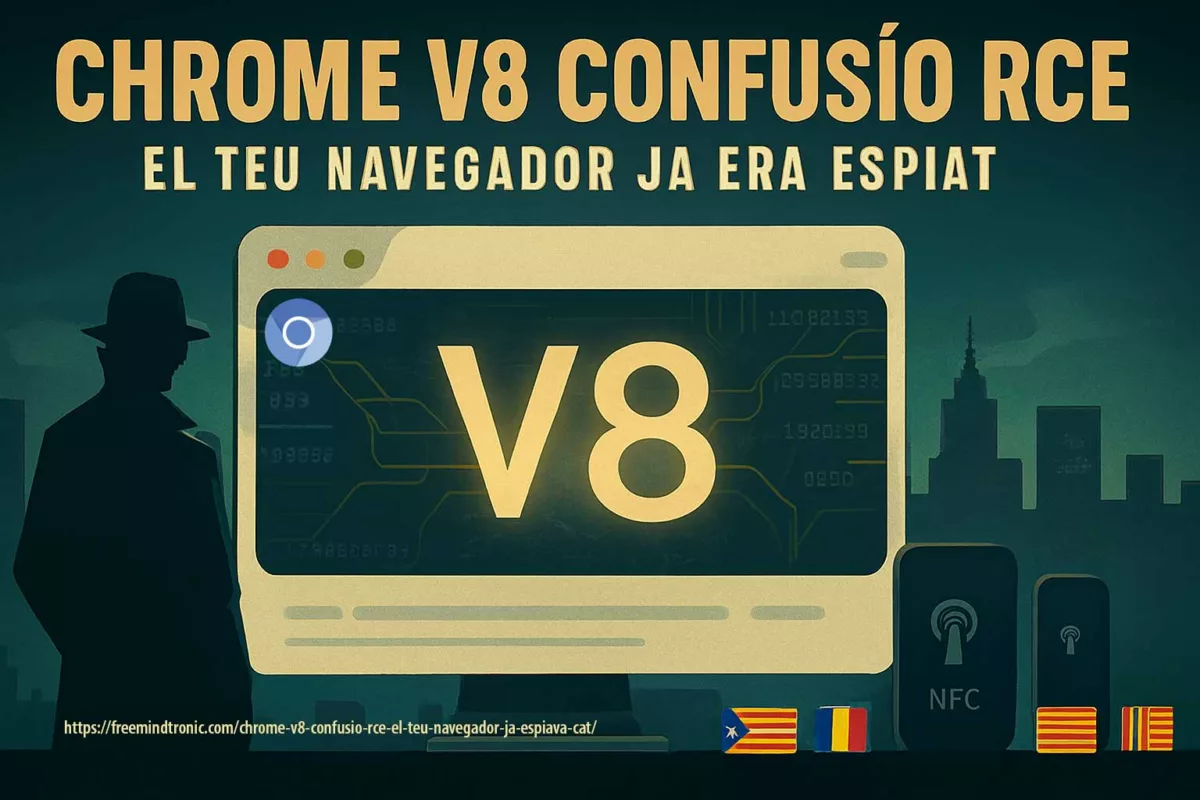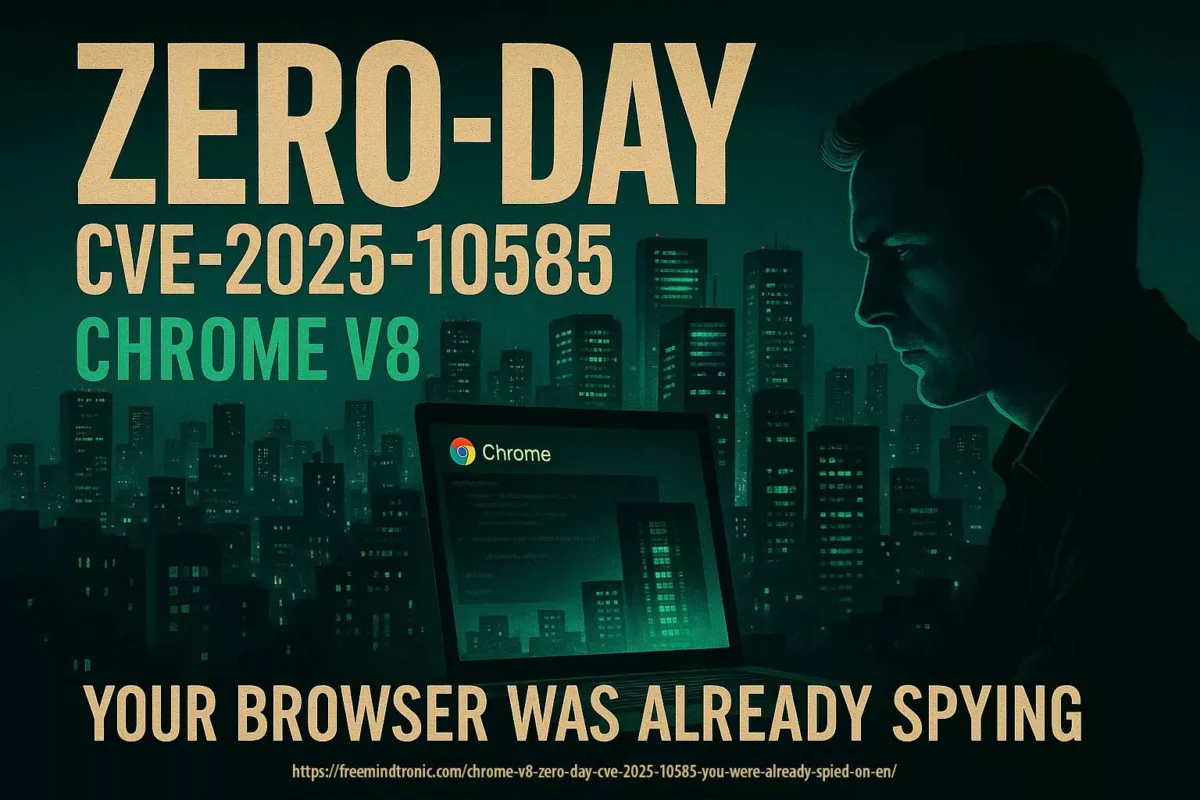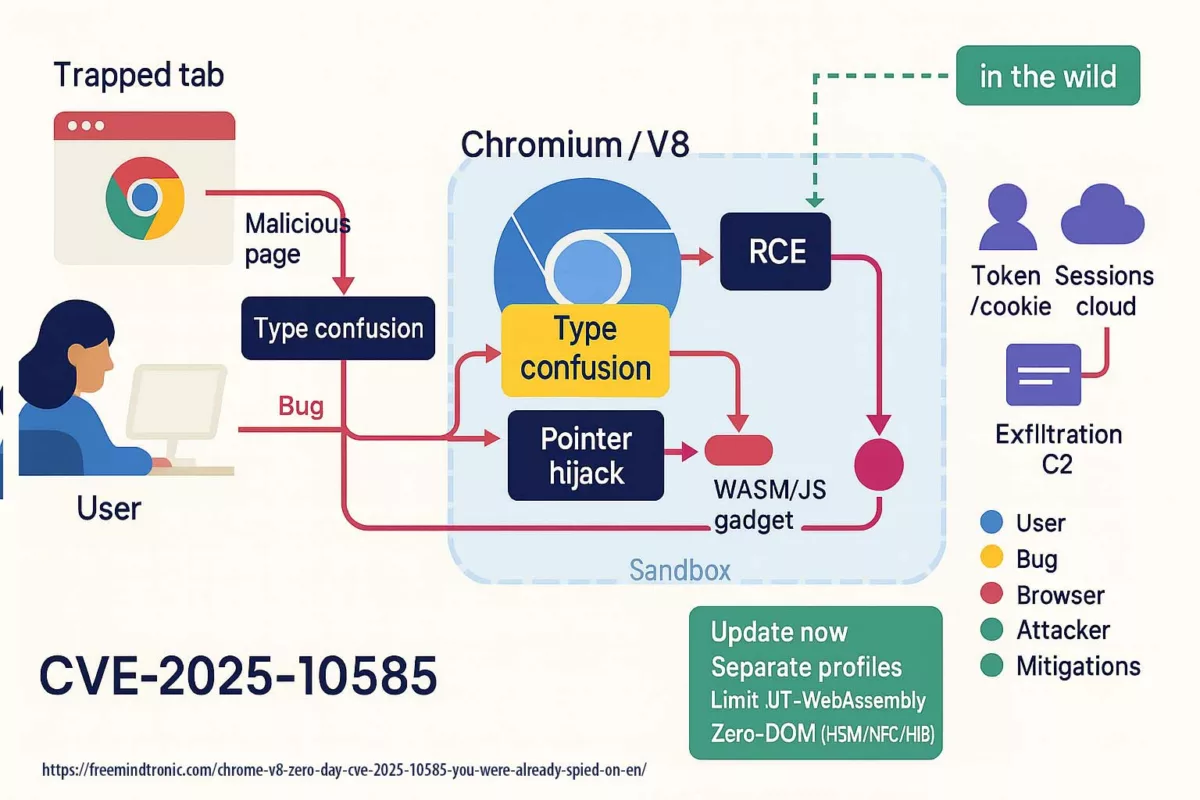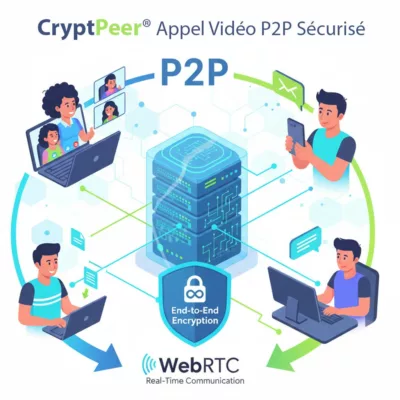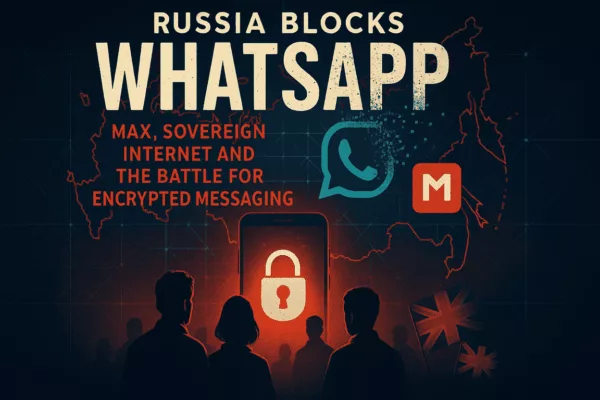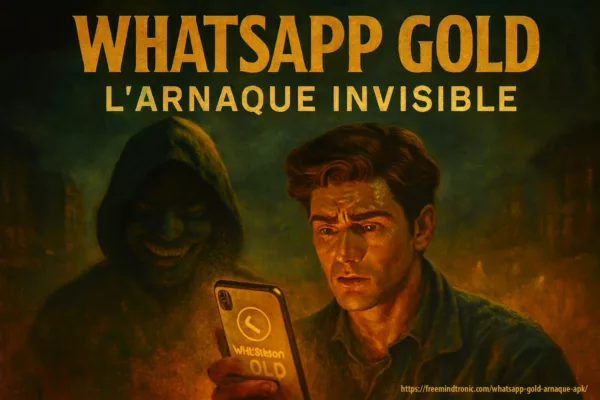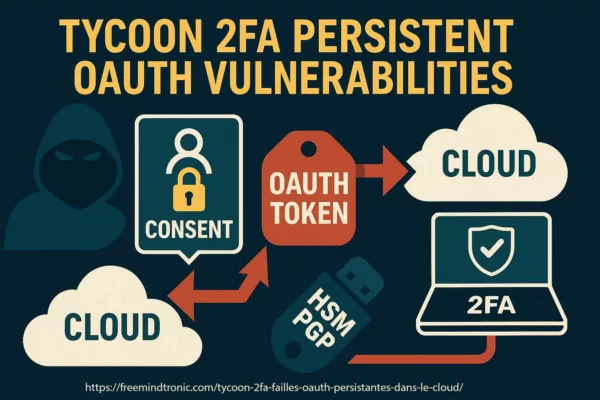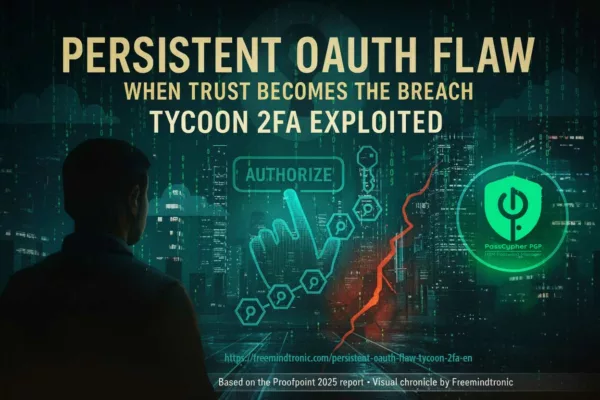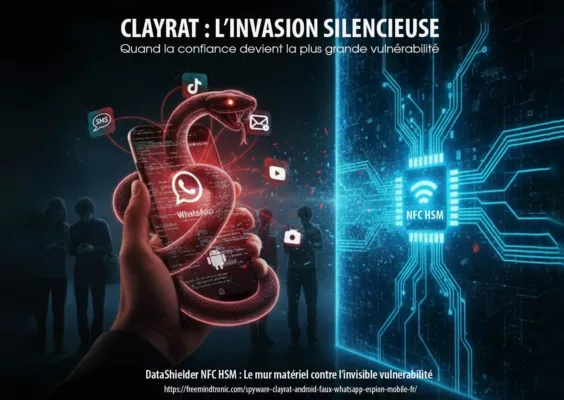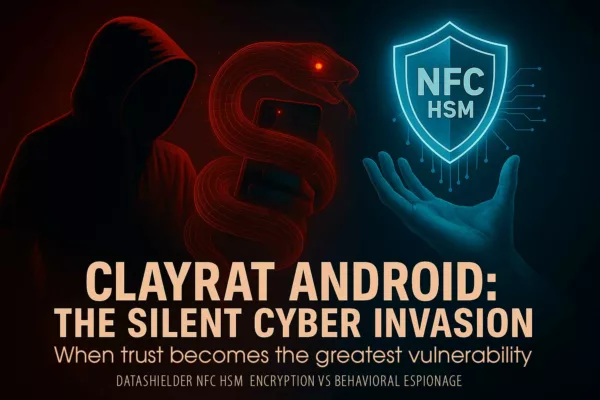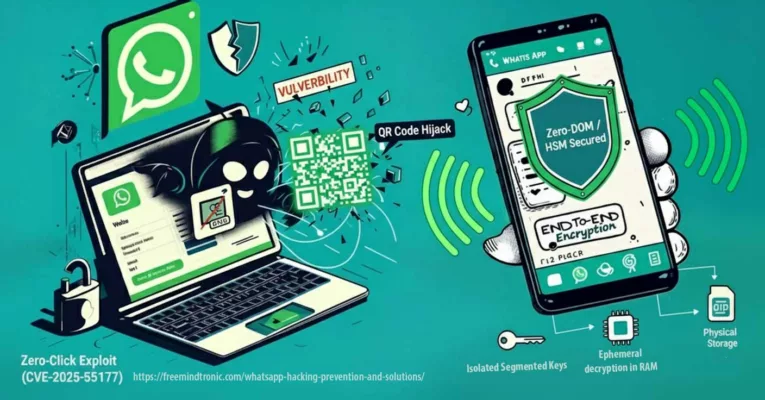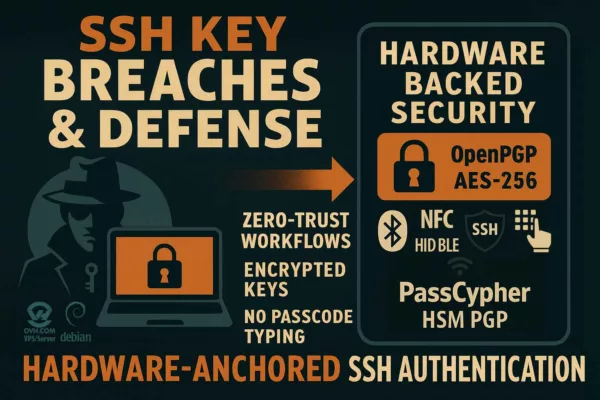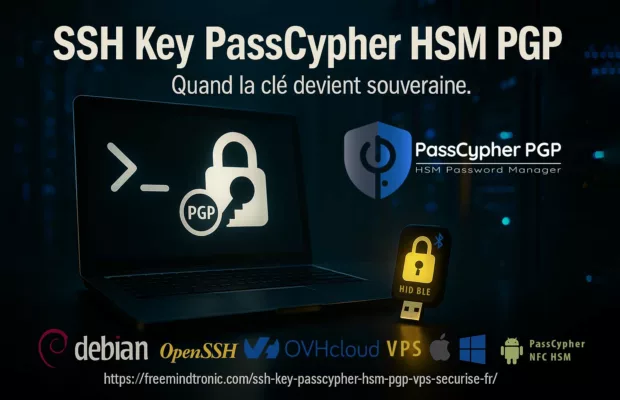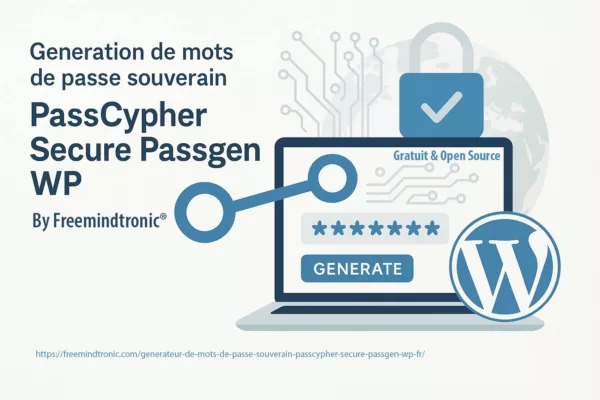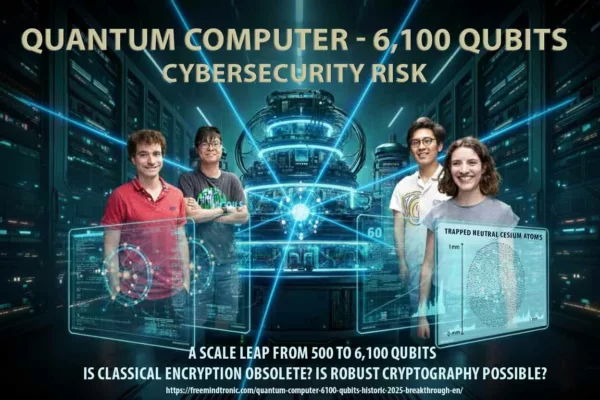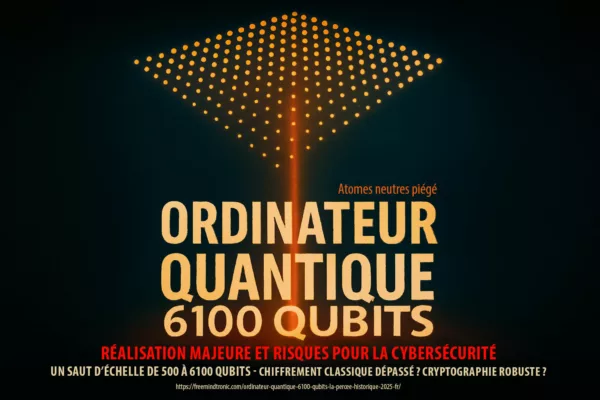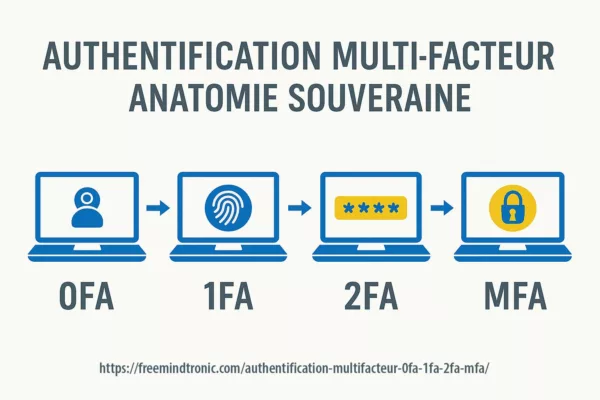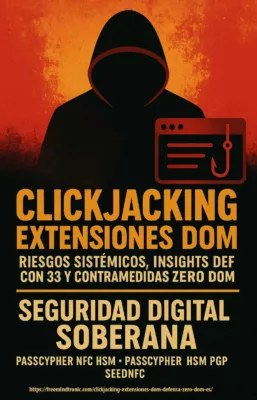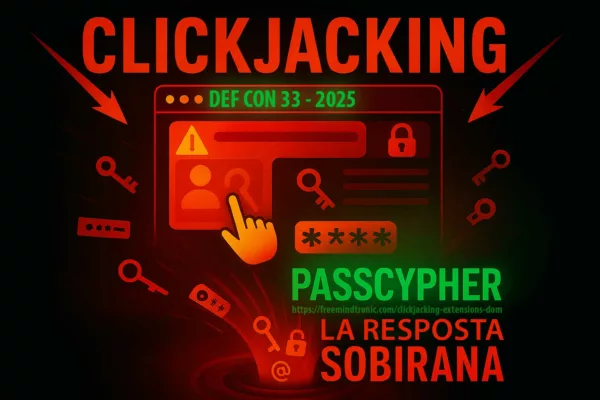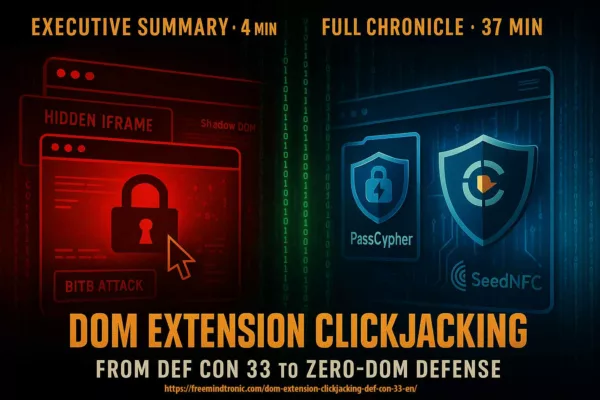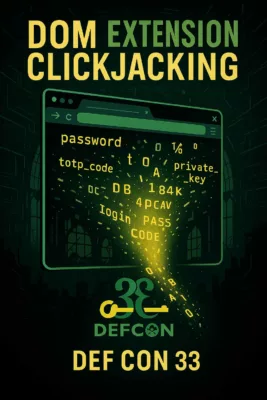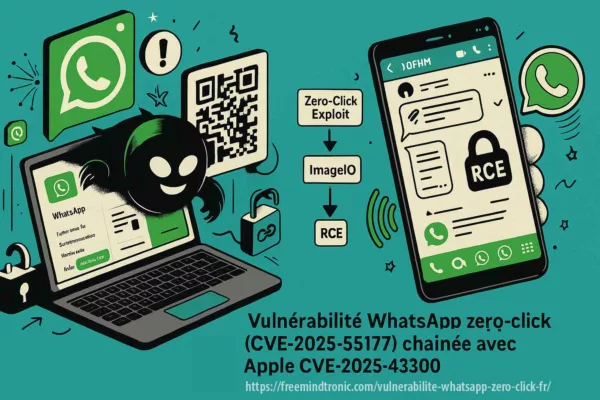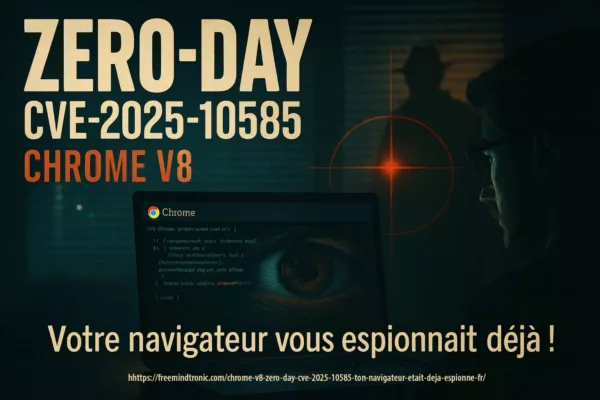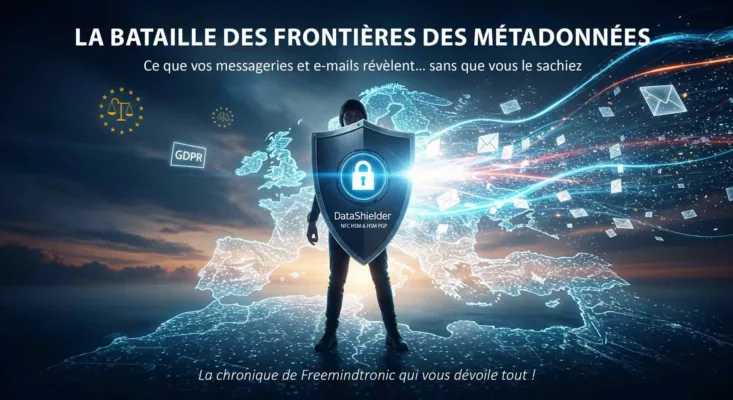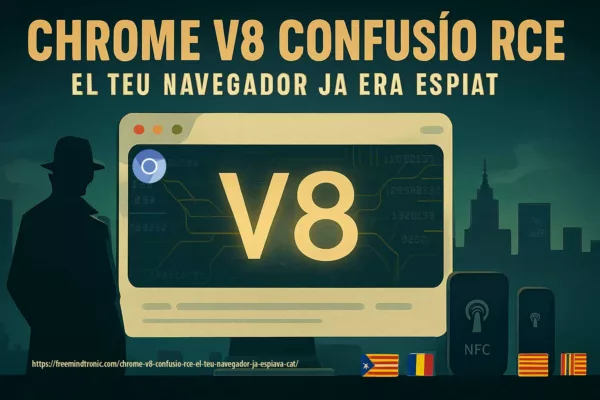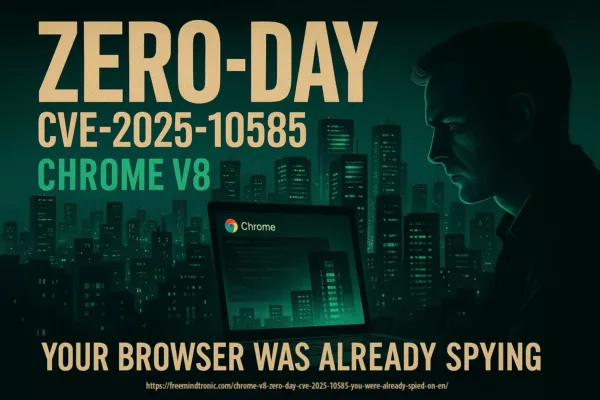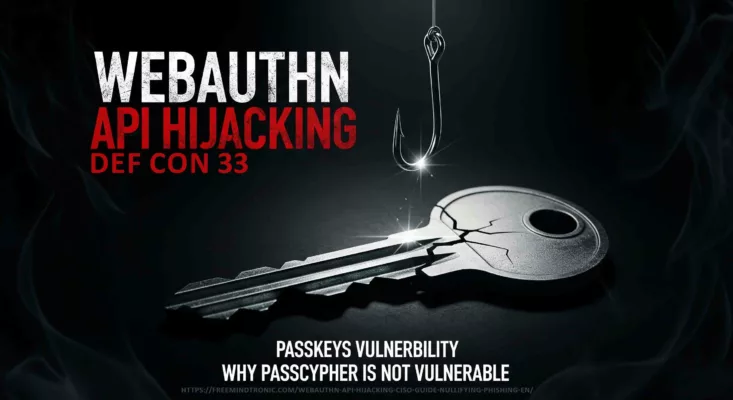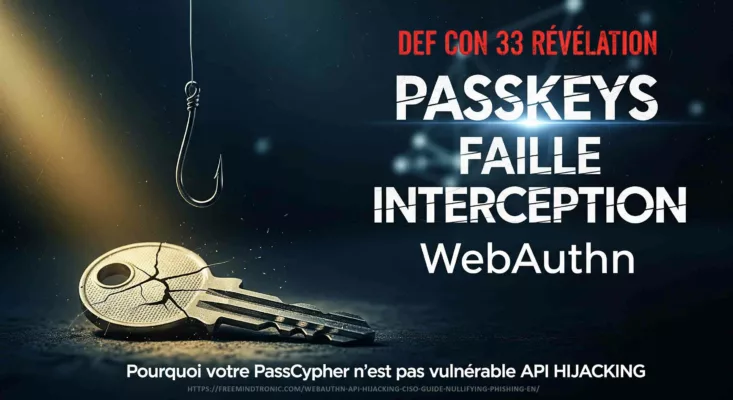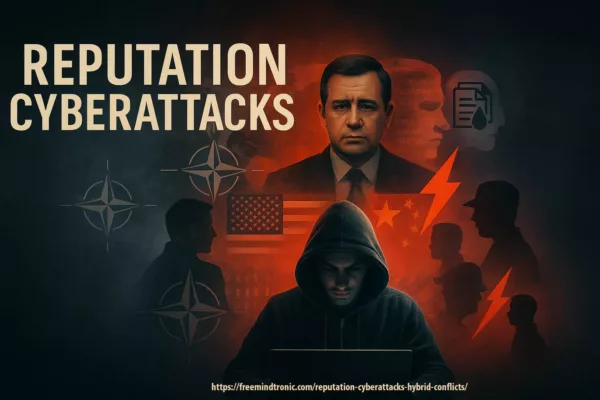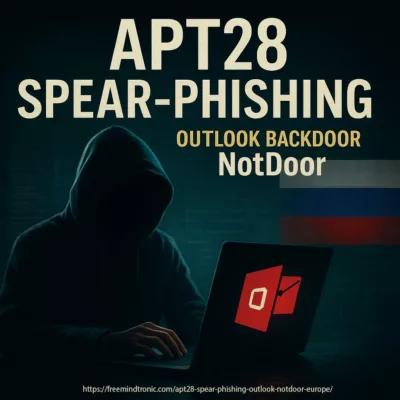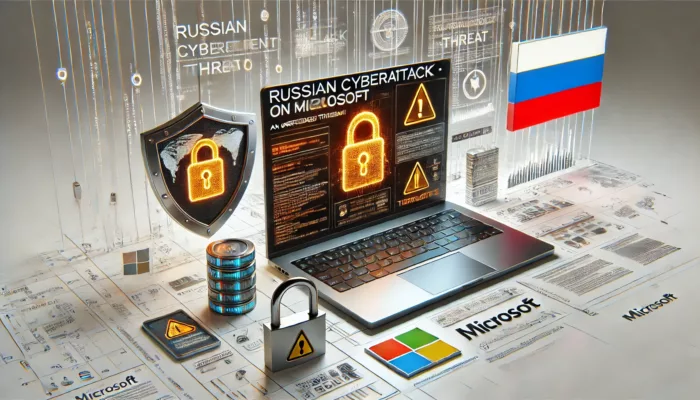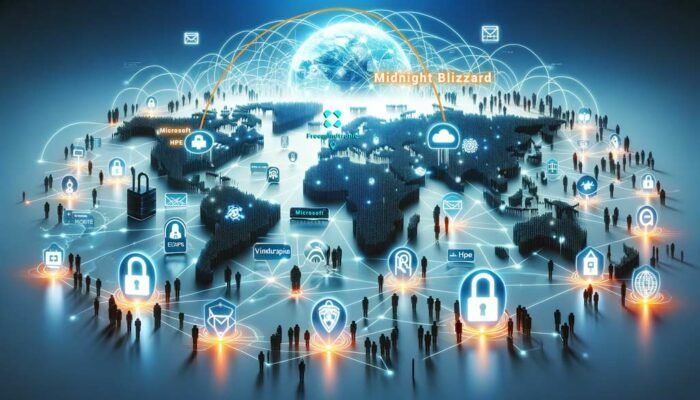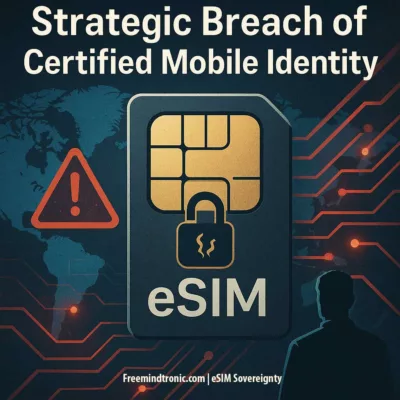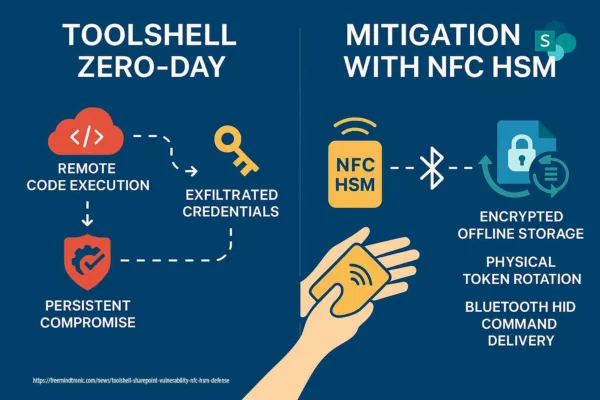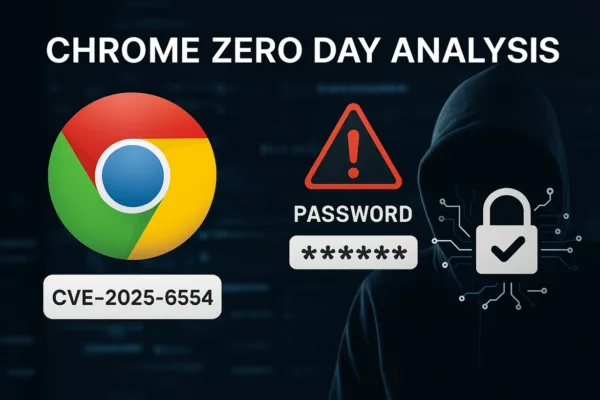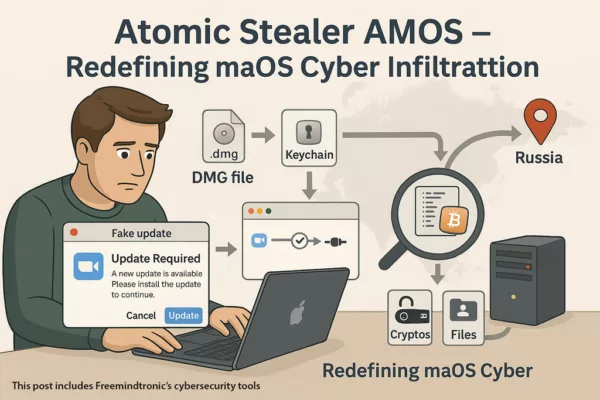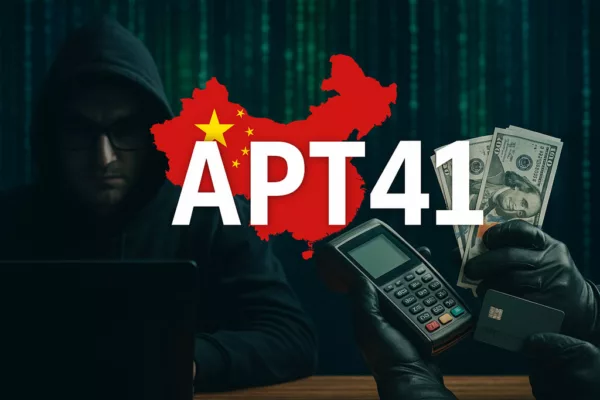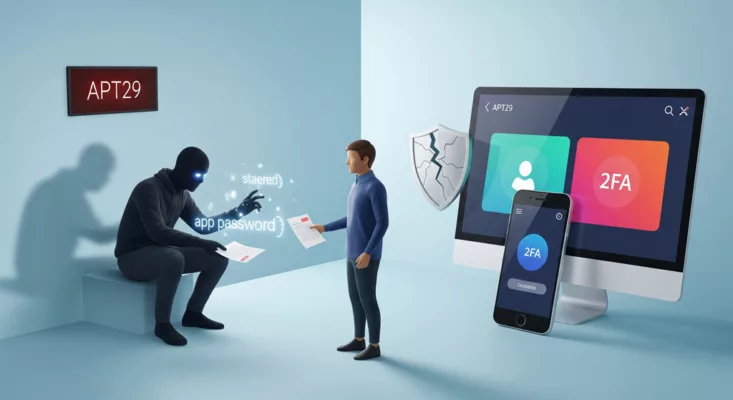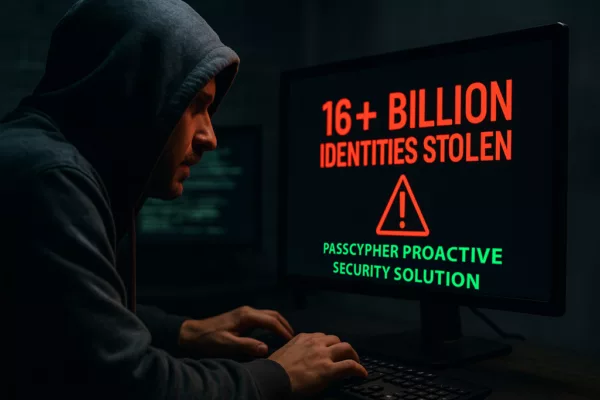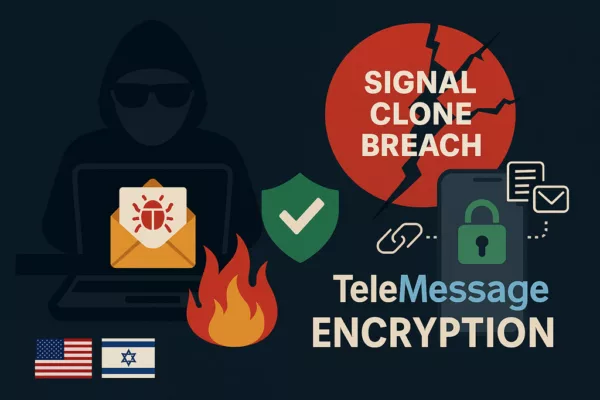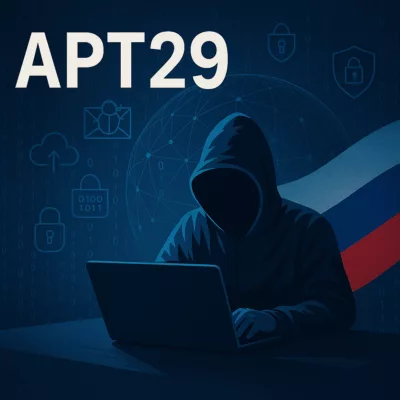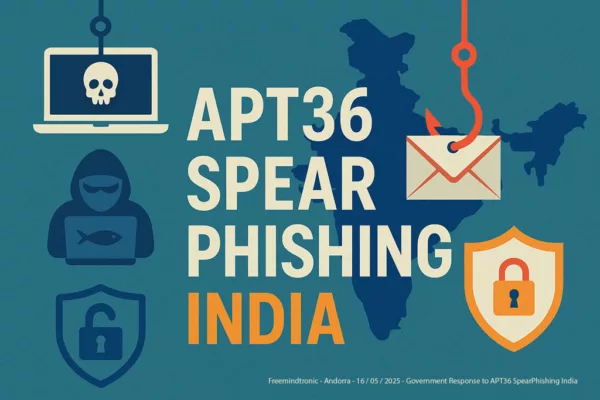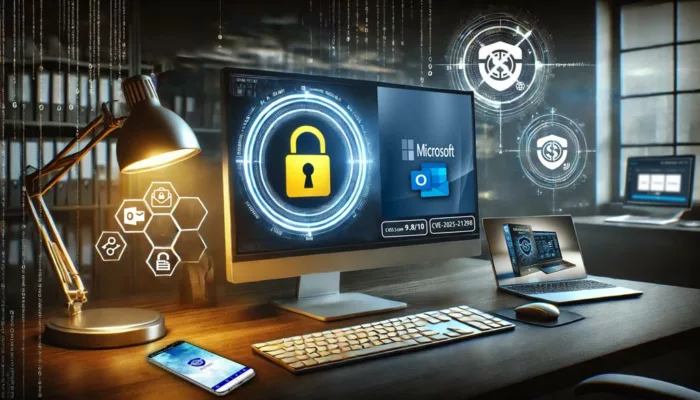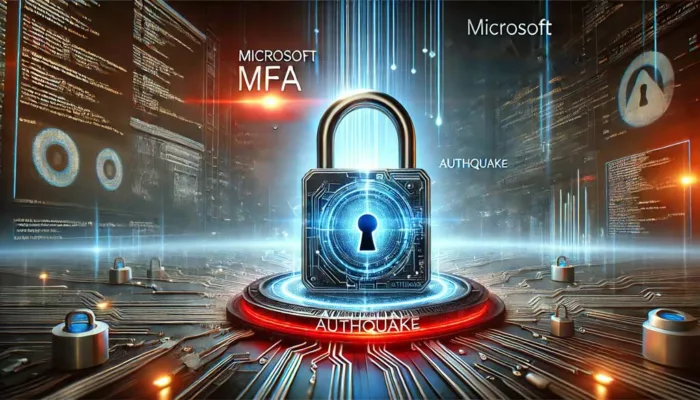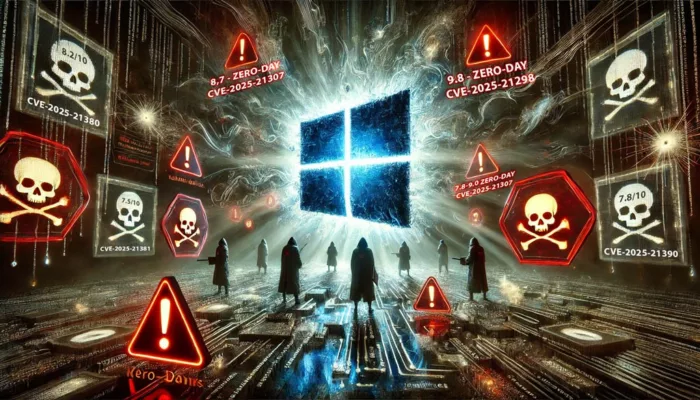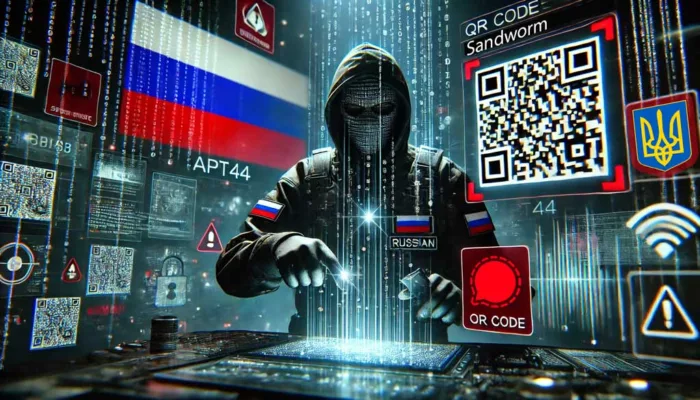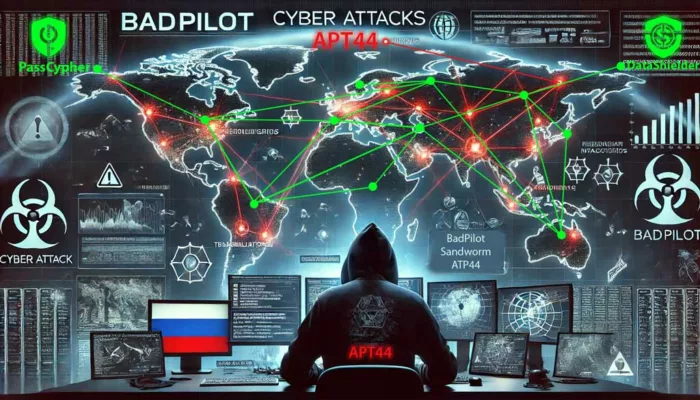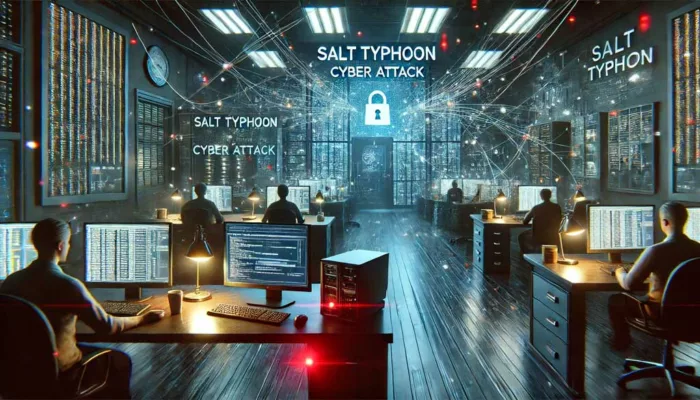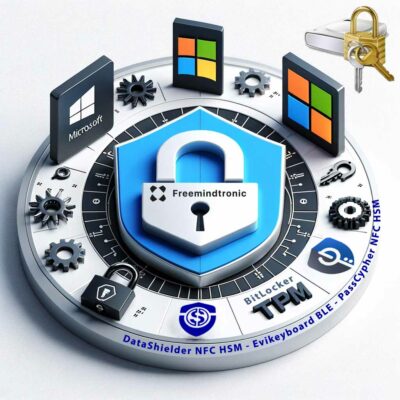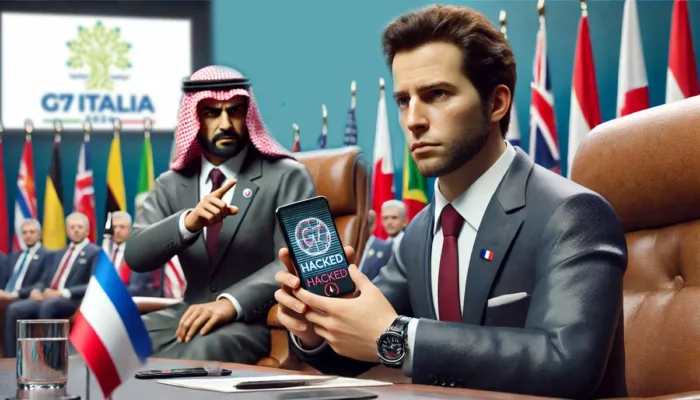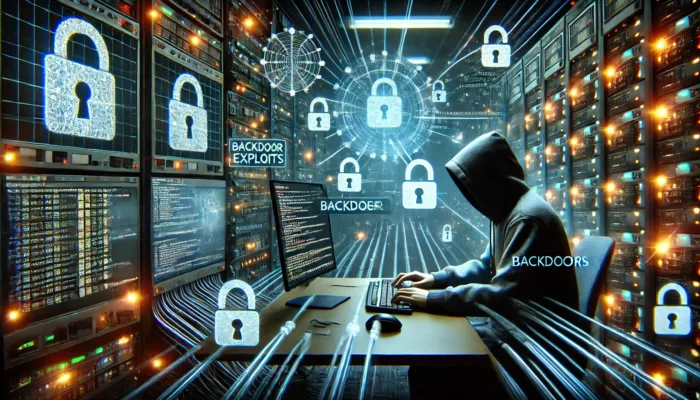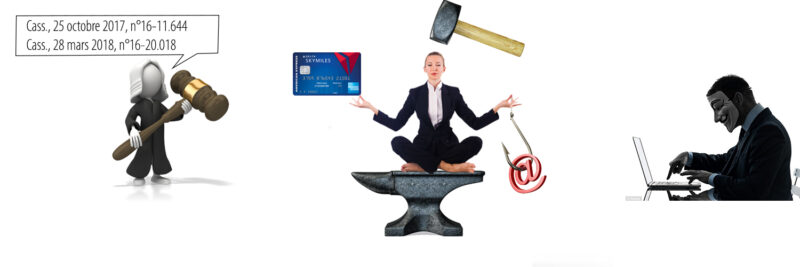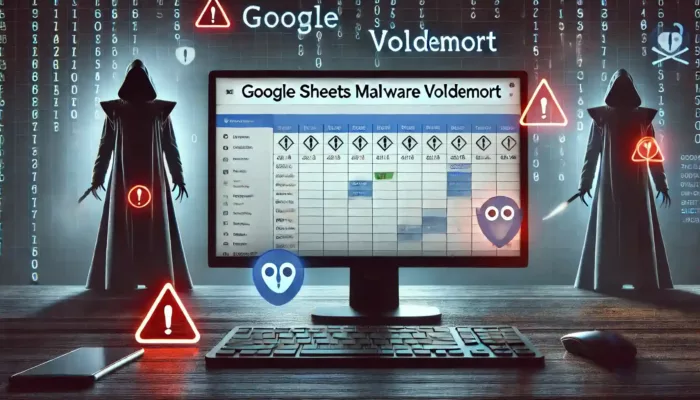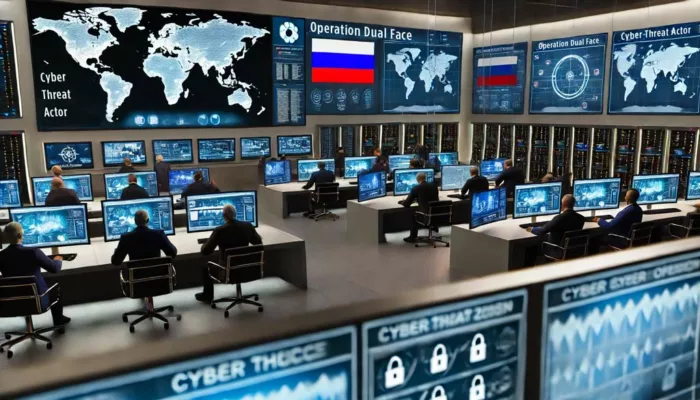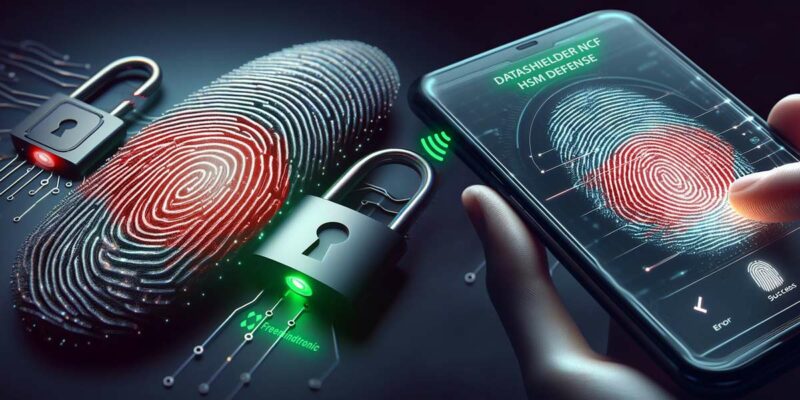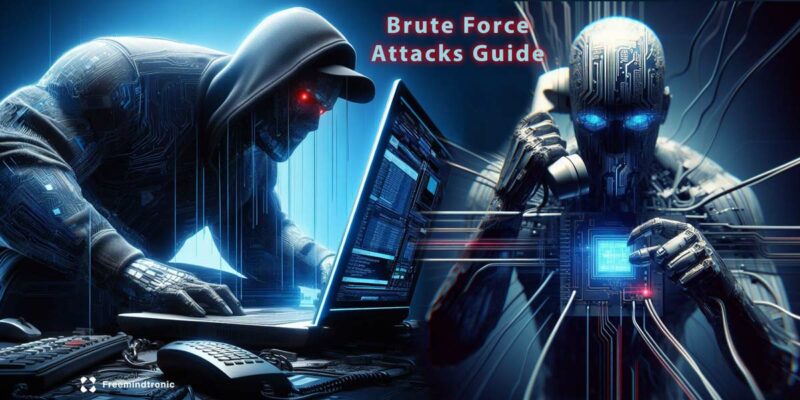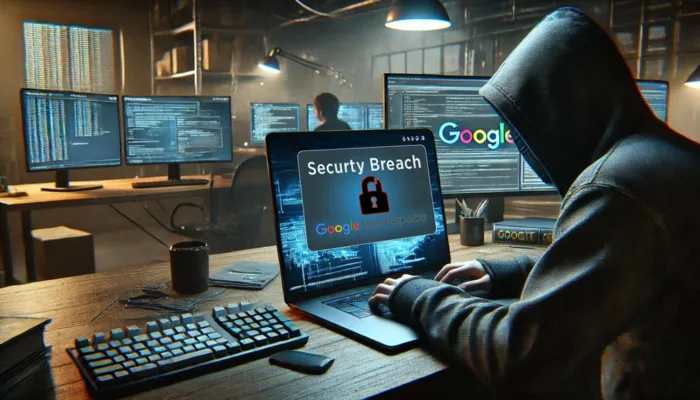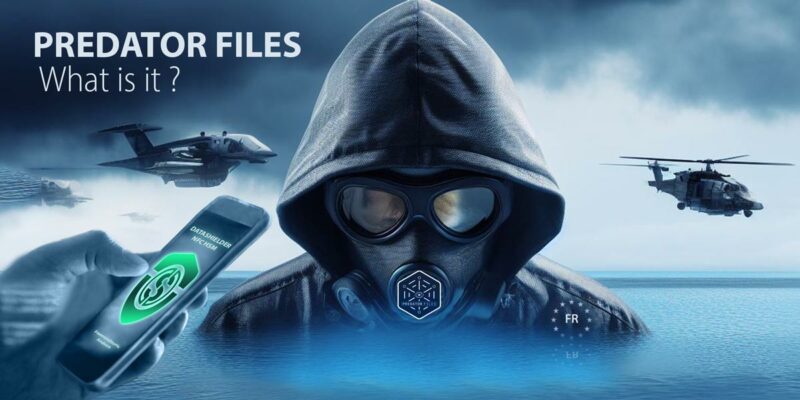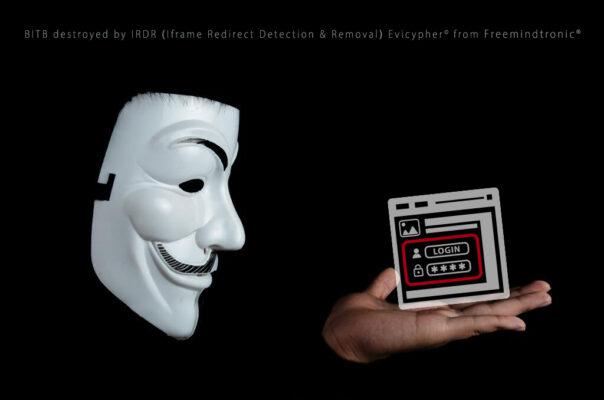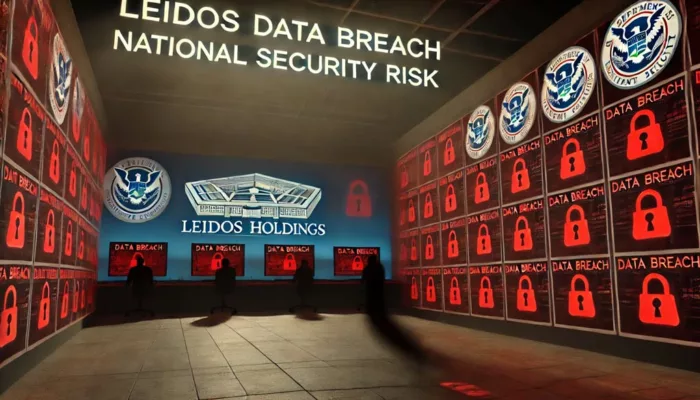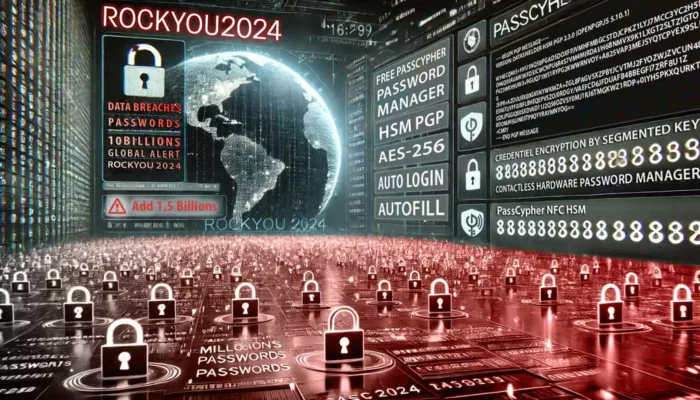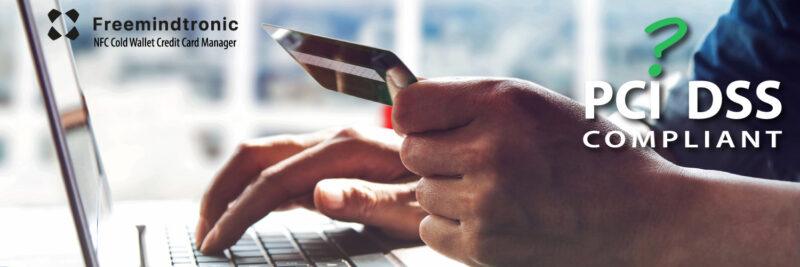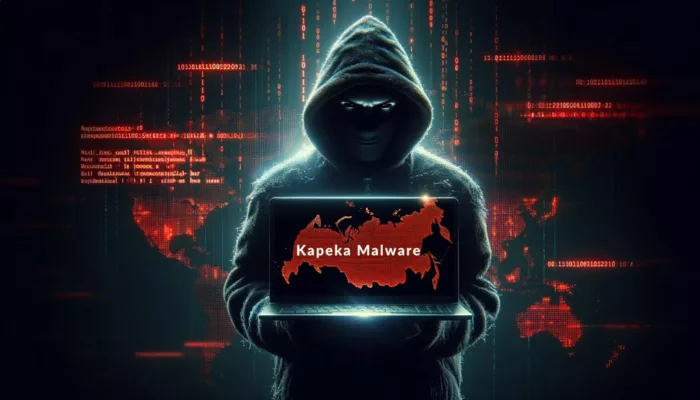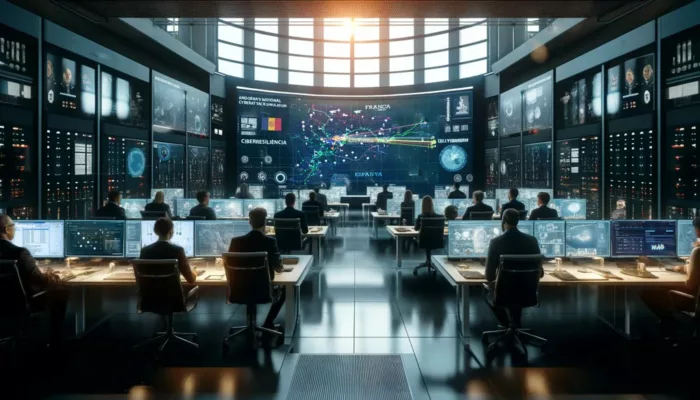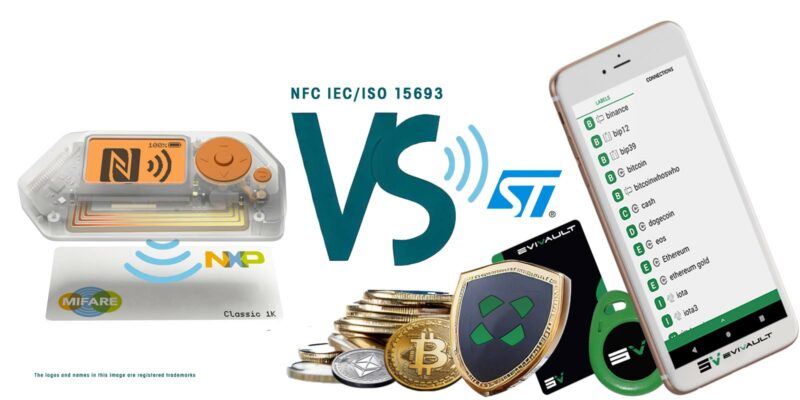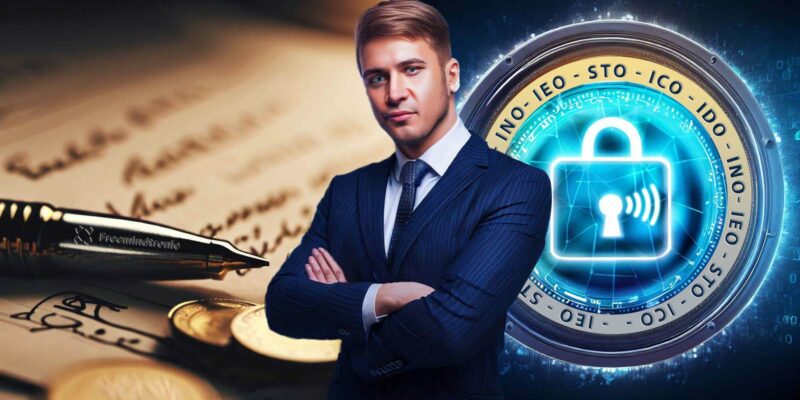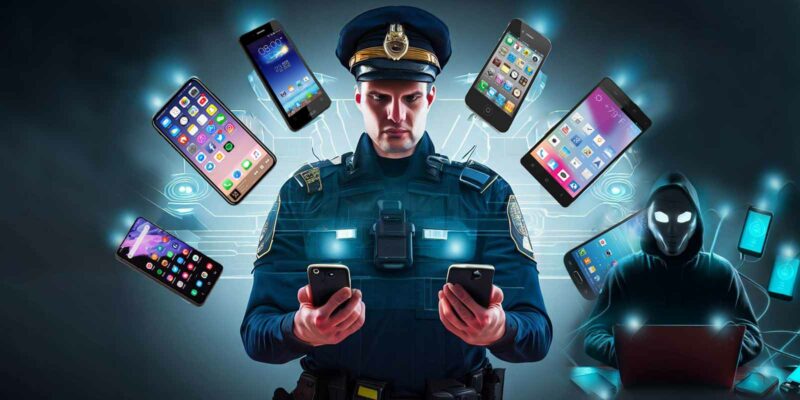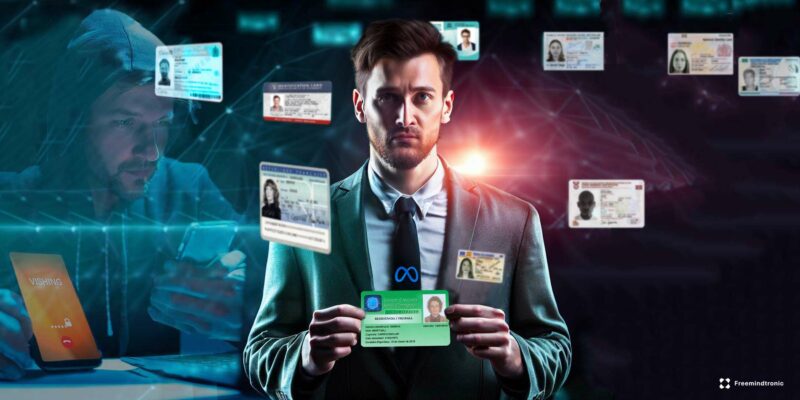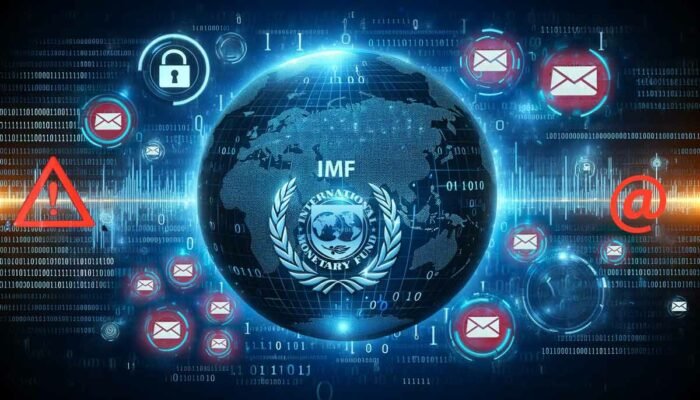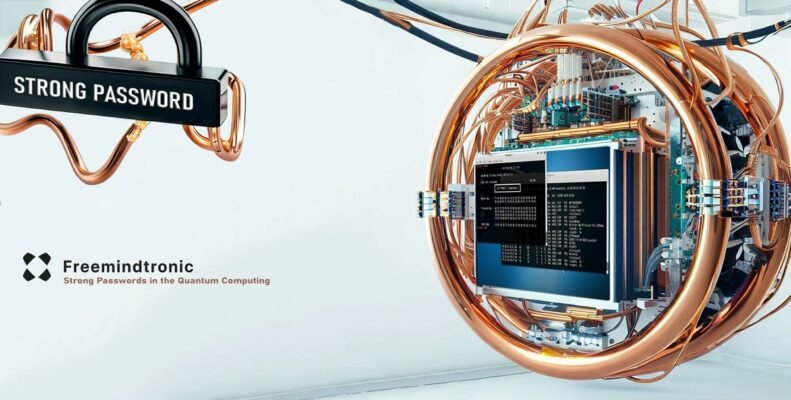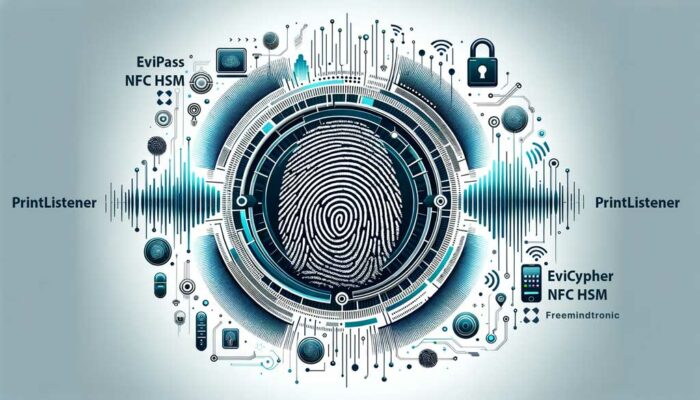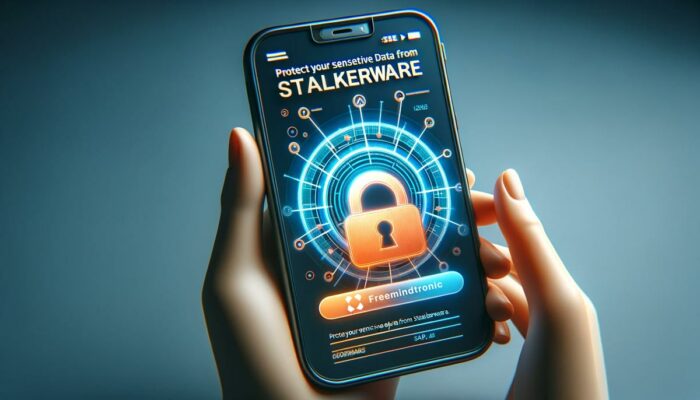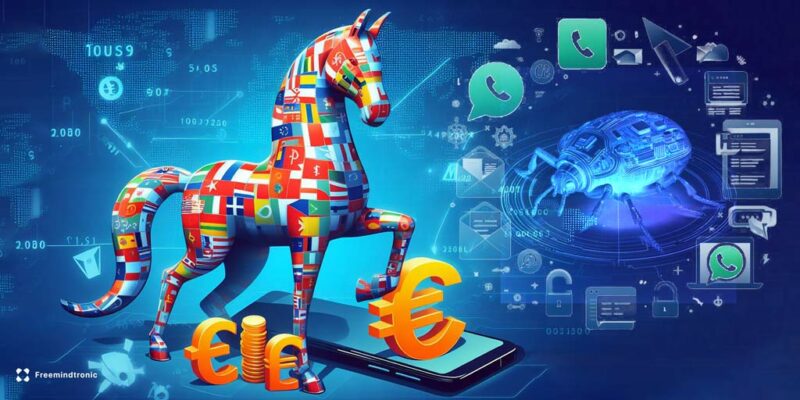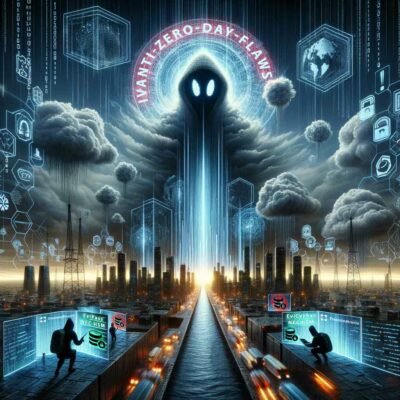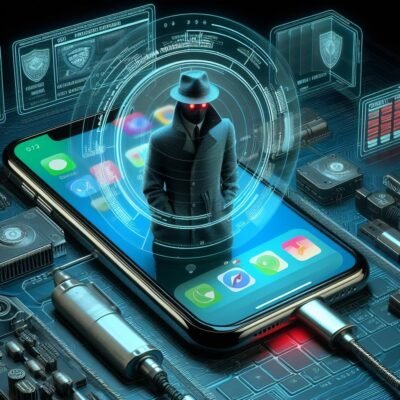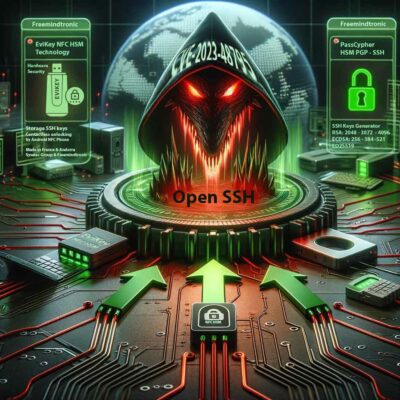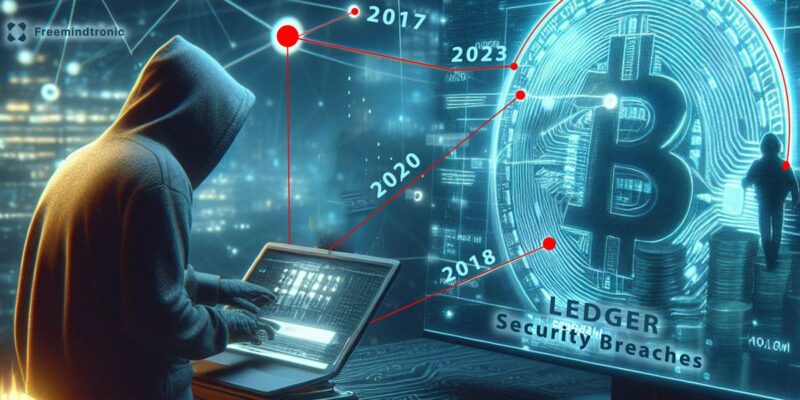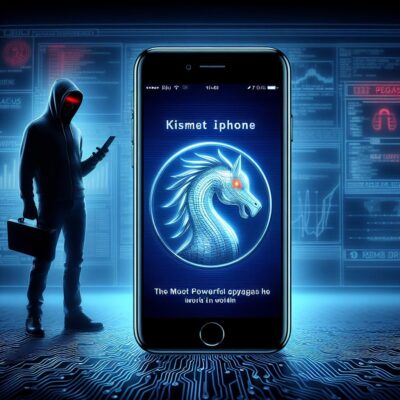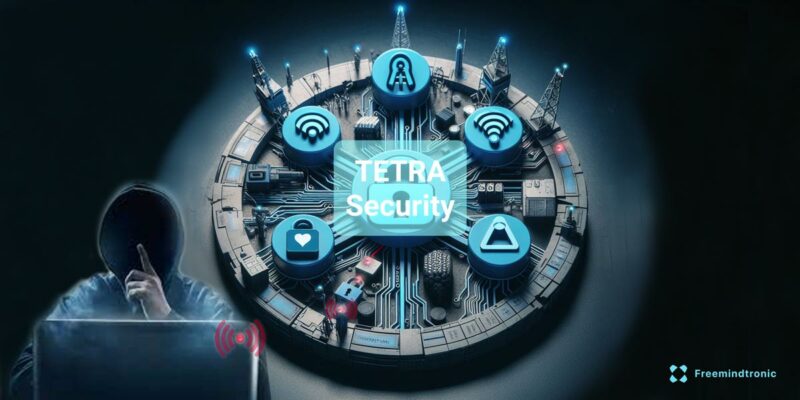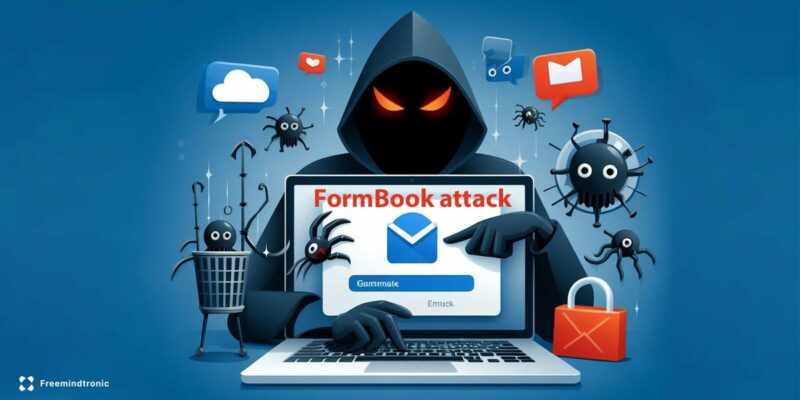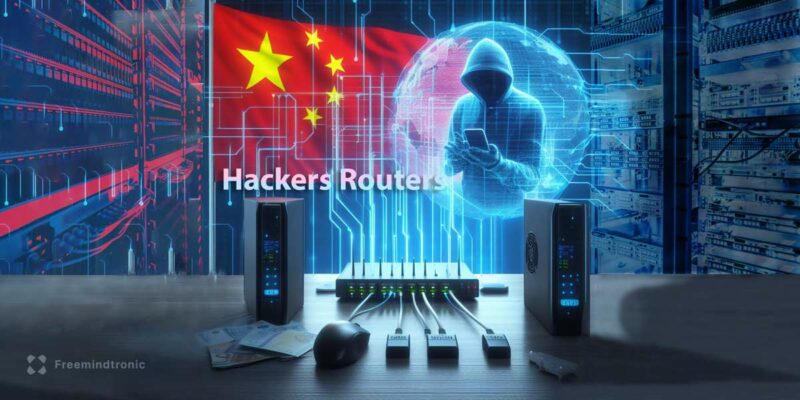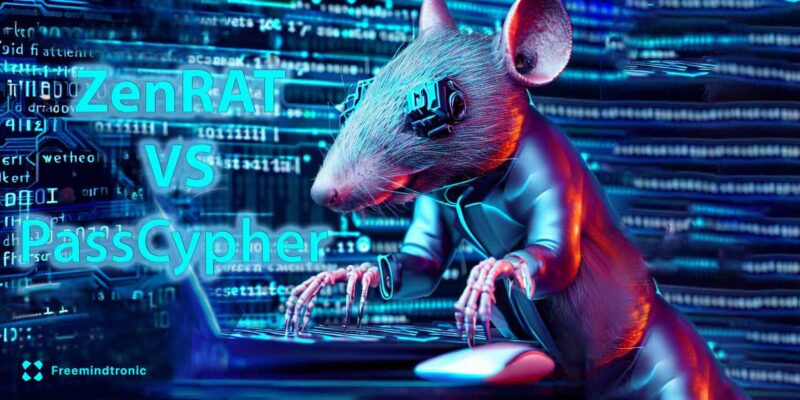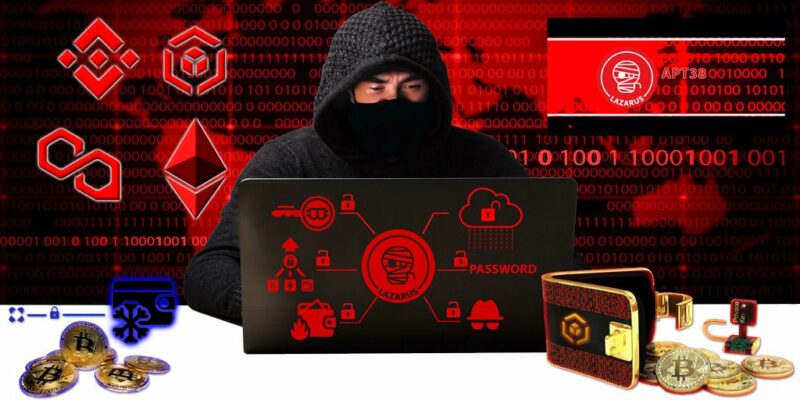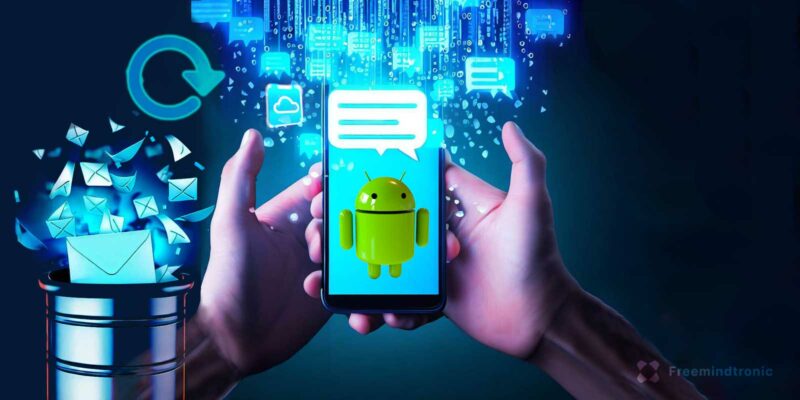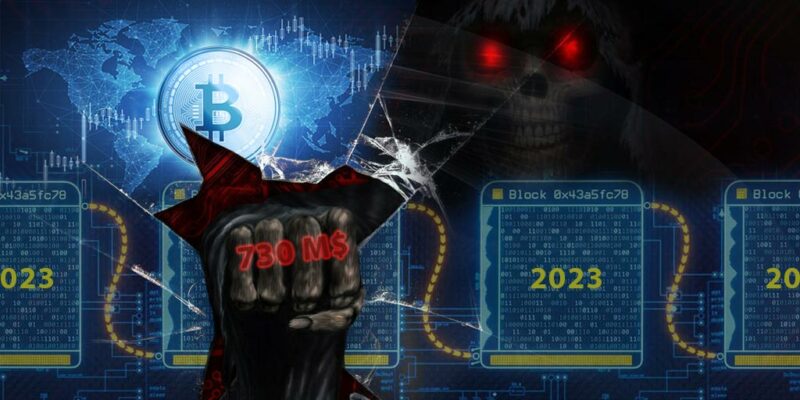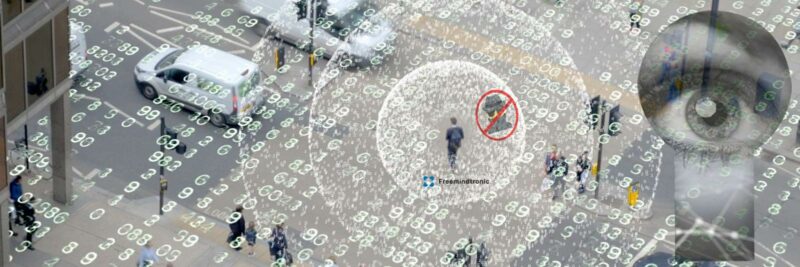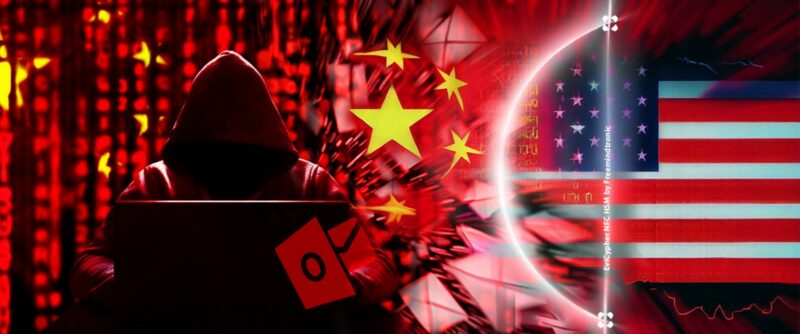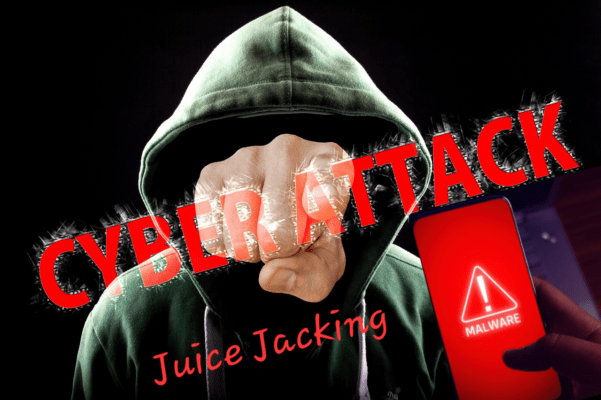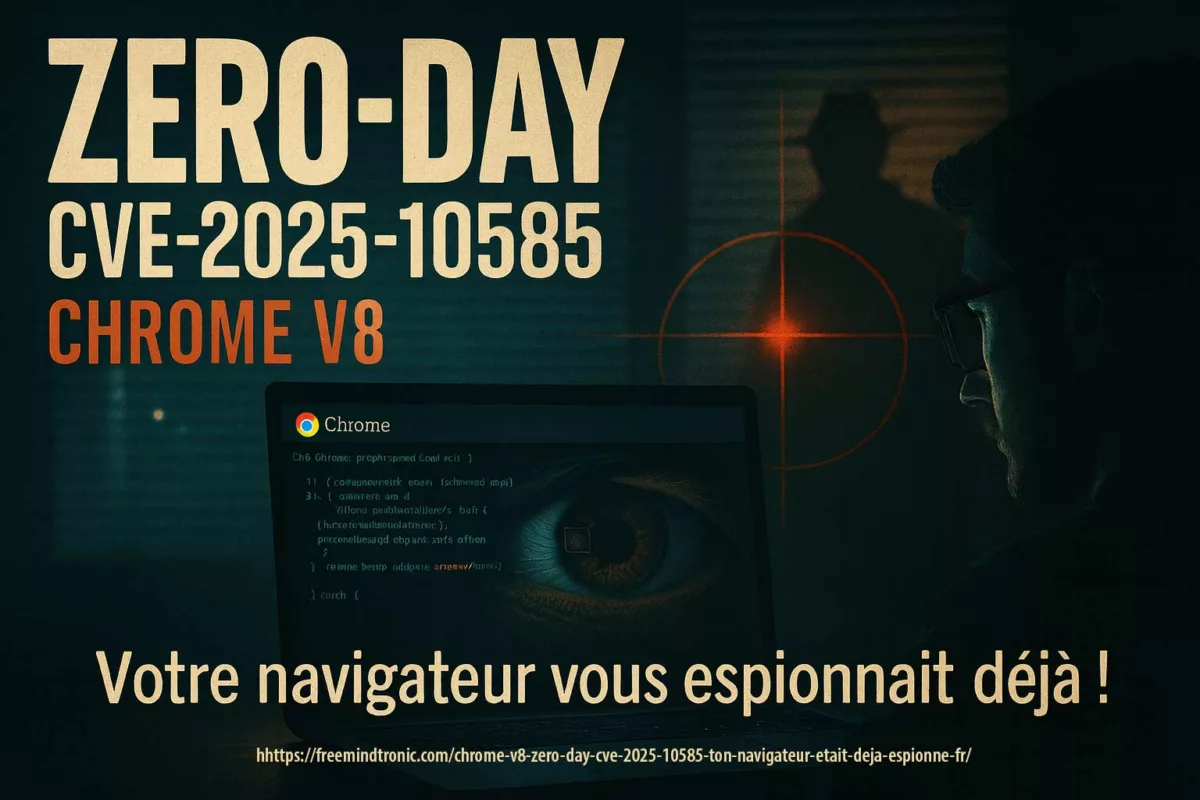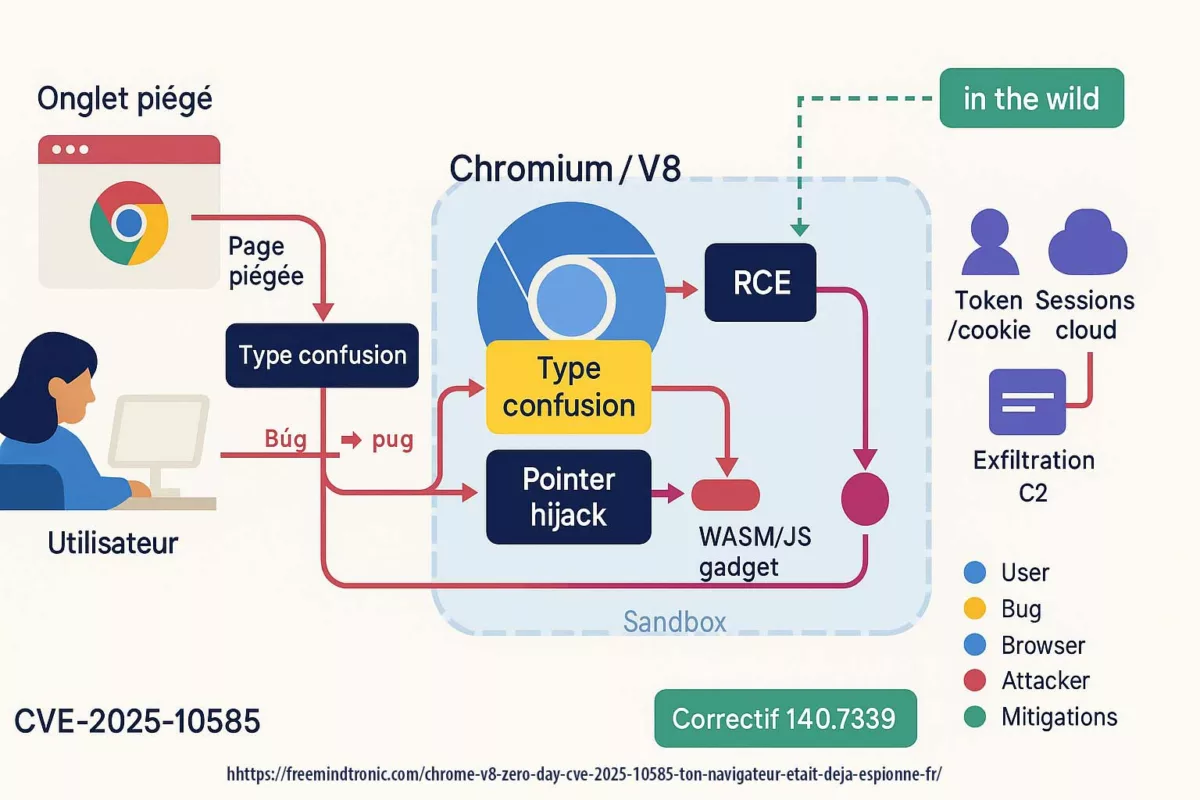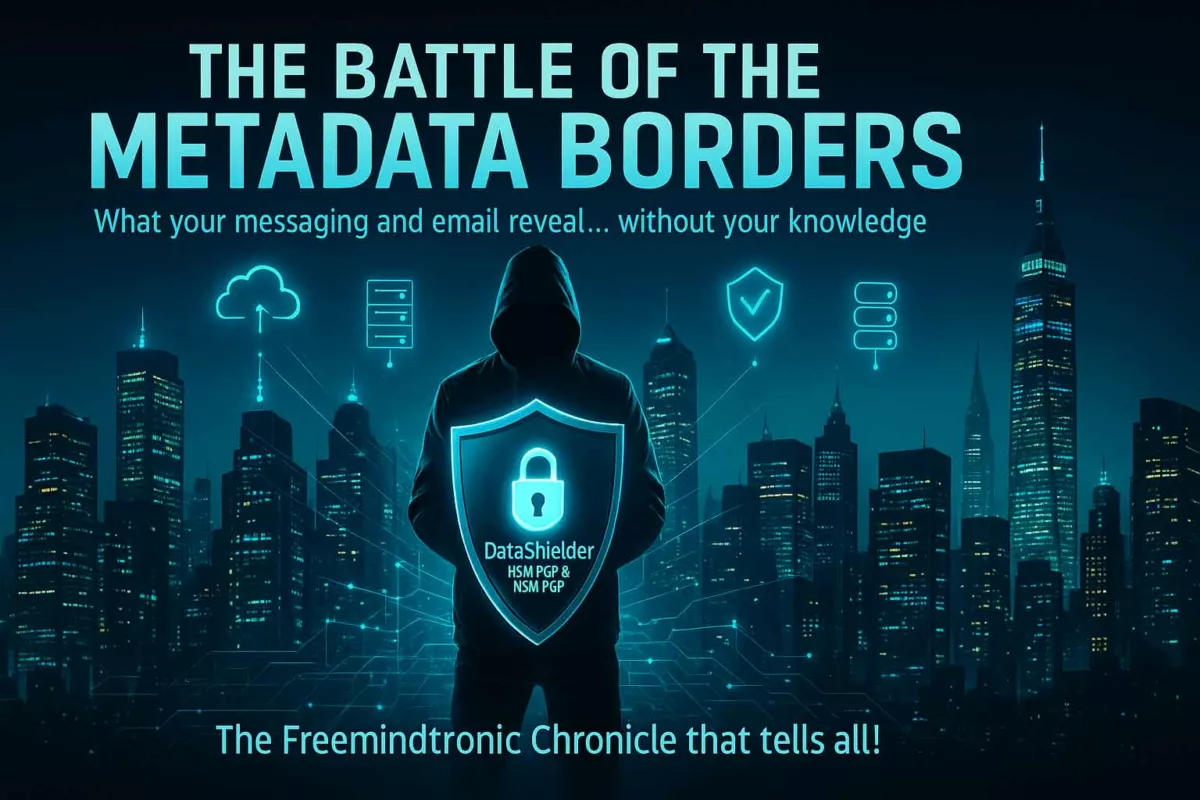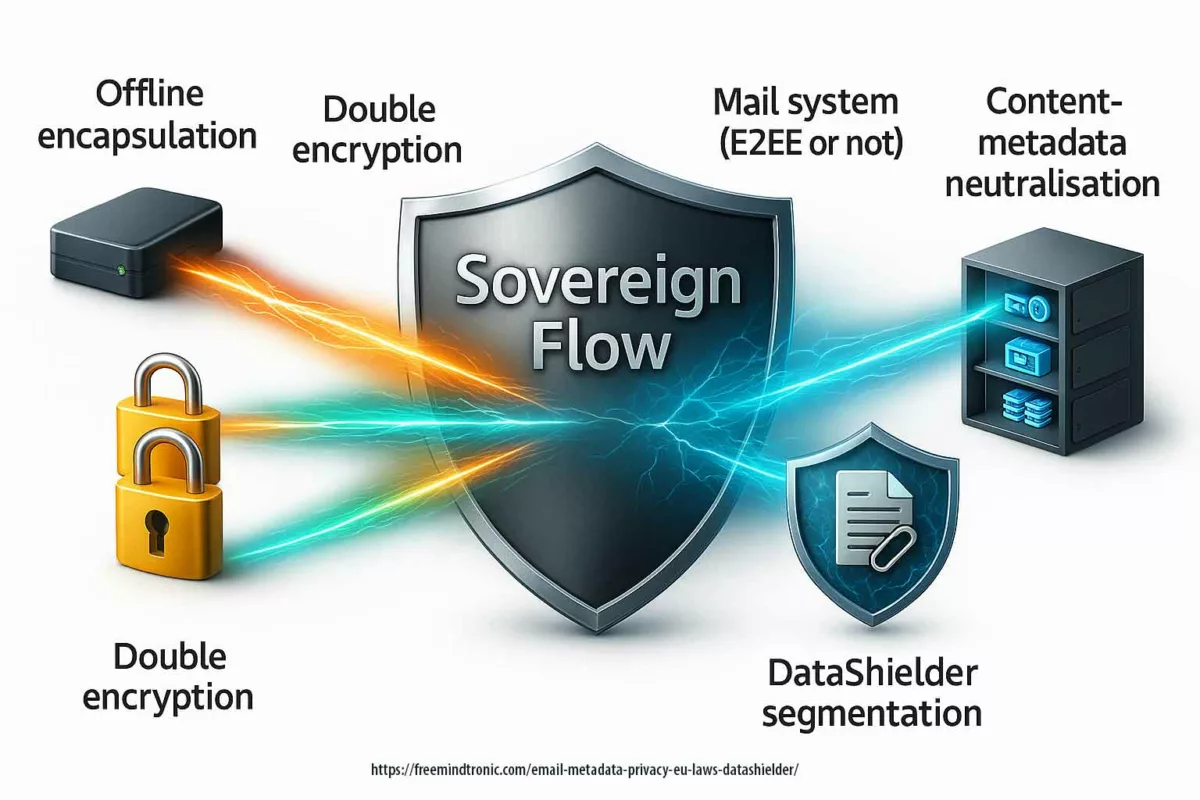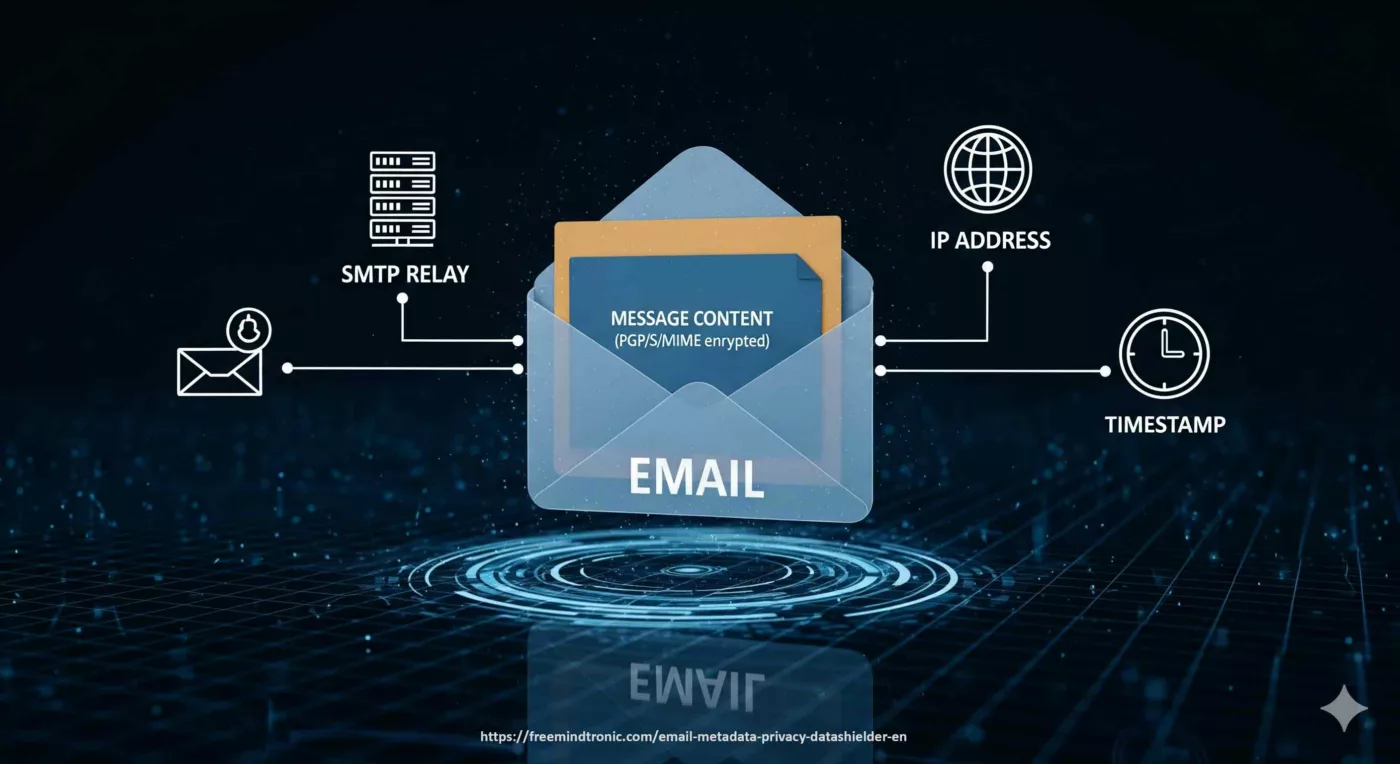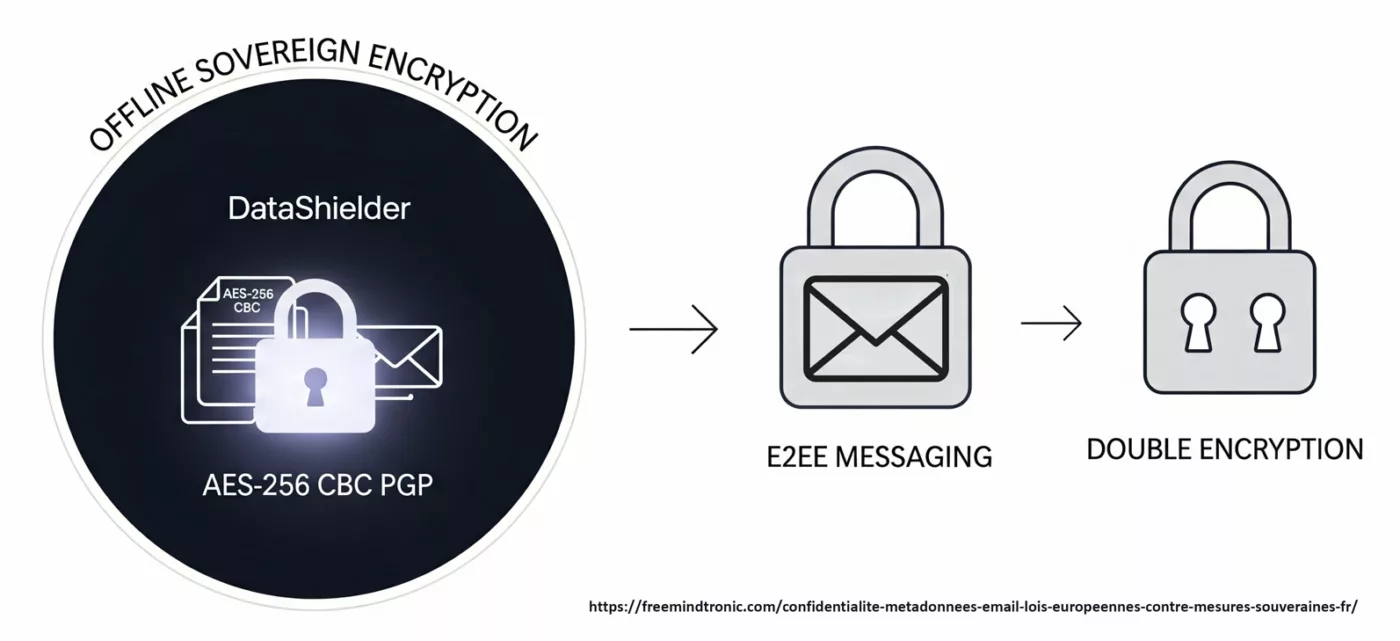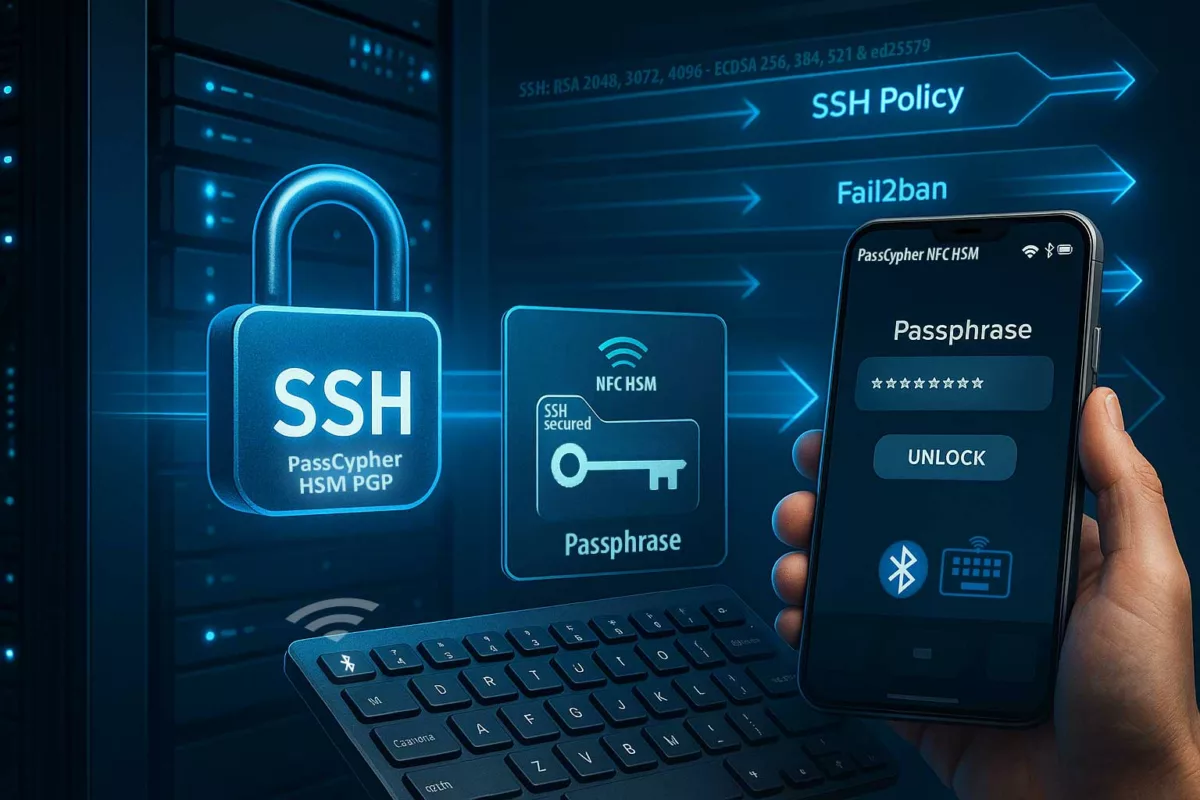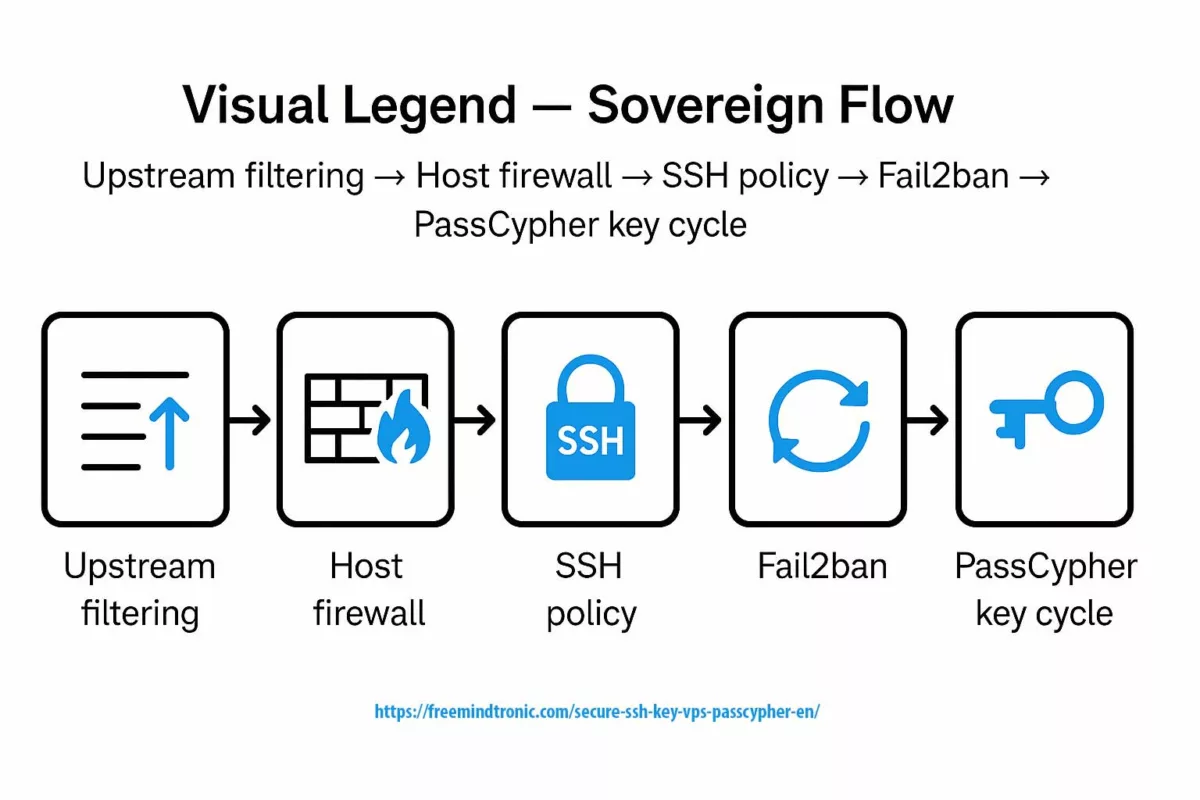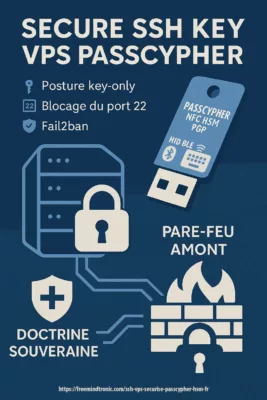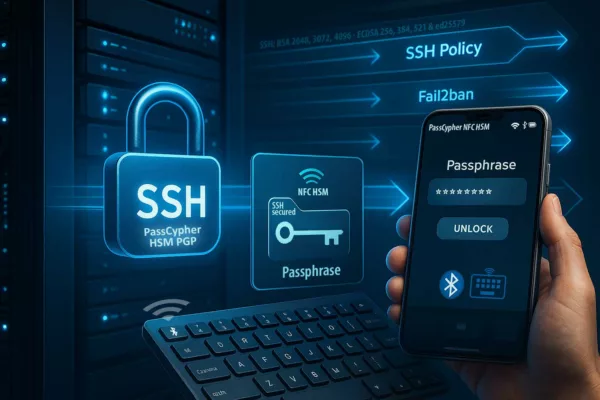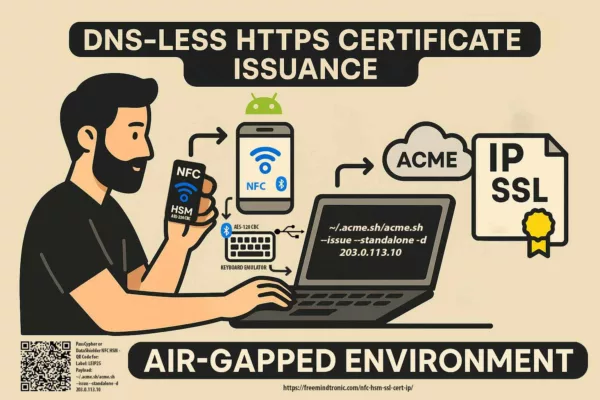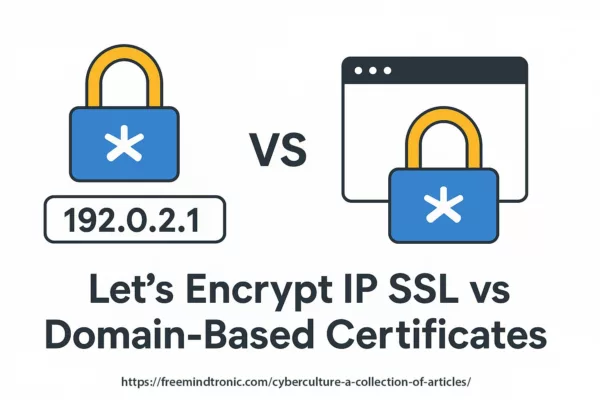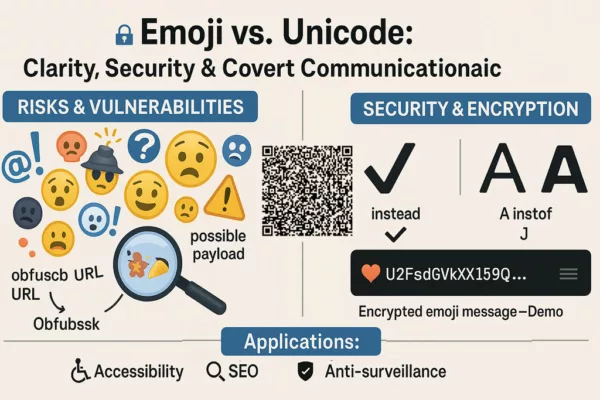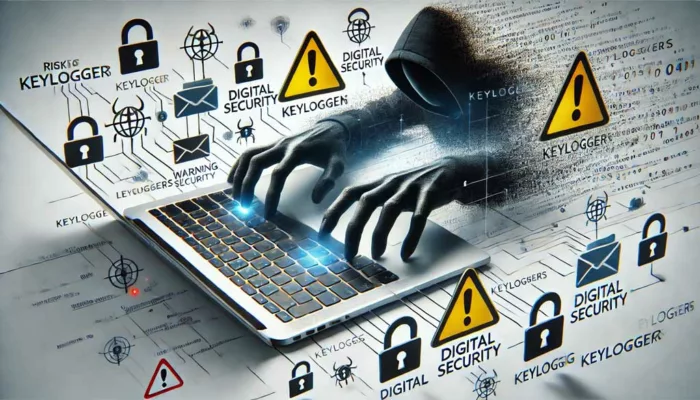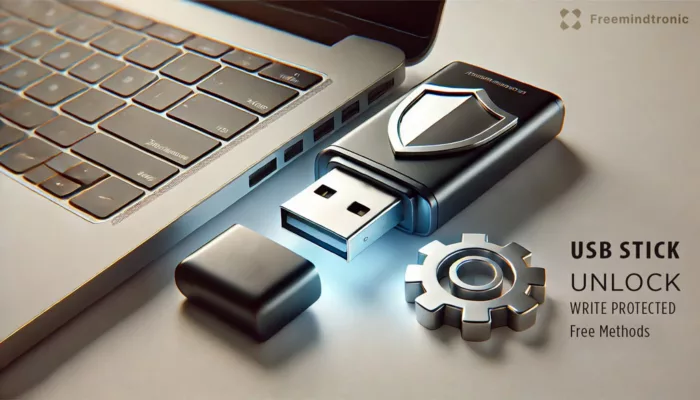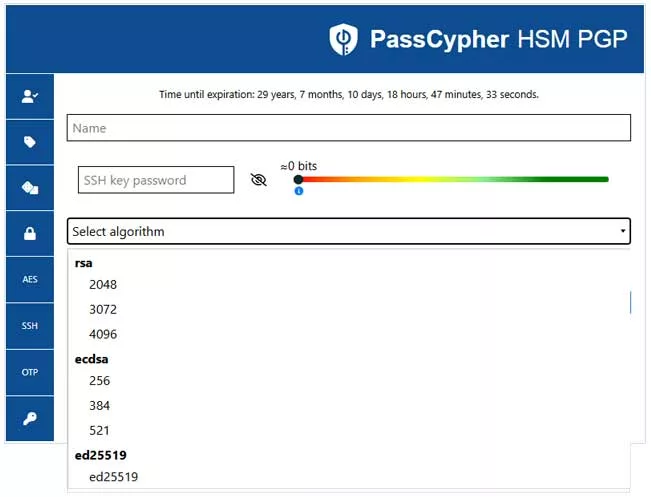Chrome V8 confusió RCE: aquesta edició exposa l’impacte global i les mesures immediates per reduir risc — amb guia pràctica, bones pràctiques Zero-DOM i referències oficials.
Resum ràpid
Chrome V8 confusió RCE és una vulnerabilitat activa de type-confusion a l’enginy V8 que permet execució remota de codi «drive-by». Una sola pestanya a una pàgina maliciosa pot activar l’exploit; Google TAG ha confirmat explotació «in the wild». Patches a Stable: 140.0.7339.185/.186 (Win/Mac), 140.0.7339.185 (Linux) i Android 140.0.7339.155. Actualitza ja i tracta el navegador com a hostile runtime.
🚨 En breu — actualitza ara. Tracta el navegador com un hostile runtime. Separa usos sensibles de la navegació diària. Adopta postura Zero-DOM — instal·la PassCypher HSM (PGP gratuït) i activa l’opció anti “BITB”.
Lectura recomanada
Temps del resum: 3–4 minuts
Lectura completa: 36–38 minuts
Darrera actualització: 2025-09-19
Complexitat: Avançat / Expert
Nota lingüística: Lèxic sobirà — alta densitat tècnica
Densitat tècnica: alta ≈ 72%
Idiomes: CAT · EN · ES · FR
Accessibilitat: Optimitzat per lectors de pantalla — àncores semàntiques
Tipus editorial: Crònica estratègica (narrativa)
Sobre l’autor: Jacques Gascuel, inventor i fundador de Freemindtronic®.
Punts clau
- Una sola pàgina pot bastar: RCE “drive-by” via confusió de tipus a V8.
- Explotació confirmada en el moment de publicar el pegat.
- Versions corregides: 140.0.7339.185/.186 (Win/Mac) · 140.0.7339.185 (Linux) · Android 140.0.7339.155.
- Reflex sobirà: aïllar usos crítics, reduir la confiança en el navegador, fluxos Zero-DOM per maquinari (HSM/NFC).
Et queden tres minuts? Llegeix el resum ampliat: quan la compromissió esdevé rutina.
Errors en sèrie, defenses tardanes — Postura Zero-DOM
El 2025 es llegeix com una sèrie d’espionatge on l’atacant sempre va una passa al davant. CVE-2025-2783 al març, CVE-2025-4664 al maig, CVE-2025-5419 al juny i el Chrome V8 zero-day CVE-2025-10585 al setembre. A cada episodi, el mateix patró: torçar prou la memòria per obtenir un punt de suport. Als mercats grisos, una RCE estable supera sovint els 500.000 $. Mentrestant, els defensors compren temps: els pegats arriben quan les campanyes ja estan en marxa.
Chrome V8 zero-day CVE-2025-10585: per què aquest pivot ho canvia tot
Chrome V8 confusió RCE no és un accident aïllat: és el símptoma d’un model on el navegador executa codi no fiable a tocar dels teus secrets. Mentre identitats, sessions i claus travessin el DOM o romanguin a la memòria del navegador, una RCE drive-by via confusió de tipus a V8 n’hi ha prou per exposar-les. A continuació expliquem què passa realment, qui ho explota i com recuperar l’avantatge — començant per actualitzar a Stable 140.0.7339.185/.186 i endurir el runtime amb una postura Zero-DOM.
- Resum ràpid — CVE-2025-10585
- Errors en sèrie — Postura Zero-DOM
- Per què aquest pivot ho canvia tot
- Què revela el zero-day
- Zero-day V8 el 2025: la cadència
- Qui l’explota?
- Impacte en l’usuari
- Què fer ara
- Per què està lligat al DOM
- Versions corregides i cronologia
- ></a>Exposició i impacte — focus catalanoparlant
- Exposició i impacte
- Anatomia — type confusion a V8
- Després del pas — del contenidor al corredor
- Actors i incentius
- Reescriptura sobirana (Zero-DOM)
- Senyals febles
- Lectures relacionades…
- Controls ràpids MDM/GPO
- Què no hem cobert
- PMF CVE-2025-10585
- Glossari
- Canvis
- Llista per a admins
- Transparència sobirana i context territorial
Què revela el Chrome V8 zero-day CVE-2025-10585
CVE-2025-10585 és una fallada de memòria al motor V8 — una type confusion al runtime JavaScript/WebAssembly. Una dada es pren per una altra i obre un pas on un script pot executar codi només en visitar una pàgina parany. El Google TAG va confirmar explotació in the wild quan es van publicar les versions 140.0.7339.185/.186 (Windows/Mac) i 140.0.7339.185 (Linux); Android 140.0.7339.155. En breu: l’atac va precedir el pegat.
Dues conseqüències.
- La compromissió pot ser silenciosa: cap indicador visual.
- Un cop el codi s’executa, el navegador deixa de ser un contenidor i esdevé un corredor: cookies, tokens, extensions i sessions al núvol es converteixen en portes laterals a l’abast.
Zero-day Chrome V8 el 2025: la cadència
El patró es repeteix: fallades de memòria a V8 al llarg de l’any, sincronitzades amb campanyes en curs. Manté una bretxa persistent entre explotació i pegat, sobretot quan permet RCE.
| CVE | Tipus | Finestra de correcció | Enllaç oficial |
|---|---|---|---|
| CVE-2025-2783 | Corruptela de memòria | Març 2025 | cve.org |
| CVE-2025-4664 | Use-after-free / política (Loader) | 14 maig 2025 | Chrome Releases — Desktop |
| CVE-2025-5419 | Lectura/escriptura fora de límits | 3 juny 2025 | Chrome Releases — Extended Stable |
| CVE-2025-10585 | Type confusion (V8) | 17 set. 2025 | Desktop · Android |
Mercat: un zero-day fiable de V8 (RCE/escapada de sandbox) sovint supera els 500.000 $.
Qui explota un Chrome V8 zero-day com CVE-2025-10585?
Tres esferes convergeixen. Equips cibercriminals monetitzen sessions i comptes via publicitat maliciosa i sites compromesos. Actors alineats amb estats l’empren amb parcimònia i precisió per travessar silenciosament fronteres tècniques d’organitzacions escollides. Intermediaris avaluen fiabilitat i abast abans d’encaixar una cadena d’explotació. L’atribució TAG apunta a un teatre d’actors estatals.
Risc sectorial i exemples
- Administració pública — portals d’e-gov, consoles d’administració.
- Finances i assegurances — tenants SaaS i banca en línia.
- Sanitat — sistemes clínics i missatgeria sensible.
- Energia/indústria — entorns IT/OT híbrids.
- Mobilitat — ecosistemes Android i flotes corporatives.
Exemples il·lustratius — evita atribuir sense confirmació oficial.
Impacte en l’usuari: d’un clic ordinari a pèrdua de sobirania
Una sola pàgina pot plantar codi que observa i desvia la vida d’una pestanya. L’usuari no veu res; el navegador transporta cookies, tokens i extensions, que esdevenen palanques d’elevació i persistència. El risc és sistèmic: molts serveis tracten el navegador com un espai de confiança. Un zero-day V8 recorda que no ho és.
Què fer davant de CVE-2025-10585: tracta el navegador com un runtime hostil
Actualitza a 140.0.7339.185/.186 (Windows/Mac) o 140.0.7339.185 (Linux) via Ajuda → Quant a Google Chrome; Android: 140.0.7339.155. Separa usos (perfil/VM dedicats per a operacions sensibles), redueix superfície (desactiva WebAssembly on sigui possible, limita JIT en tercers crítics), governa extensions (llista blanca, auditoria, sense sideloading) i segueix els butlletins oficials.
En una línia: aplica pegats ràpid, aïlla allò crític i desbrossa el navegador.
google-chrome --version (o chromium --version). Android: Google Play → Actualitzacions → Chrome, i reinicia.Bloc IT — polítiques d’empresa (exemple)
{
"ExtensionInstallAllowlist": ["<IDs>"],
"ExtensionInstallBlacklist": ["*"],
"URLAllowlist": ["https://intra.example.tld/*"],
"URLBlacklist": ["*"],
"DefaultPopupsSetting": 2,
"JavascriptAllowedForUrls": ["https://intra.example.tld/*"],
"AutofillAddressEnabled": false,
"PasswordManagerEnabled": false,
"WebAssemblyEnabled": false
}
Adapta-ho; desplega via GPO, Intune/MDM o JSON de polítiques gestionades.
Per què està lligat al DOM — i a la nostra crònica de Clickjacking
Una RCE a V8 (CVE-2025-10585) i el clickjacking d’extensions basat en DOM poden acabar igual: si els secrets travessen el DOM o resideixen a la memòria del navegador, són accessibles. La primera via (RCE V8) pren control del procés; la segona (UI-redressing/BITB) força secrets en un DOM parany. En tots dos casos, el DOM és la superfície d’exfiltració.
- Superfície comuna: DOM i memòria del navegador (autofill, cookies, tokens, passkeys sincronitzades, extensions).
- Vies d’atac: motor (RCE V8) o interfície (overlays, iframes,
focus(), Shadow DOM). - Mitigació convergent: aïllar usos, governar extensions i adoptar Zero-DOM (secrets fora de DOM/procés, RAM efímera i consentiment físic).
Lectura relacionada… ⤵
Vulnerabilitat Passkeys: Les Claus d’Accés Sincronitzades no són Invulnerables
Versions corregides i cronologia
| Data | Canal / Plataforma | Versió | Nota |
|---|---|---|---|
| 17 set. 2025 | Stable Desktop (Win/Mac) | 140.0.7339.185/.186 | CVE-2025-10585 llistada; explotació in the wild reconeguda. |
| 17 set. 2025 | Stable Desktop (Linux) | 140.0.7339.185 | Desplegament progressiu. |
| 17 set. 2025 | Chrome per a Android | 140.0.7339.155 | Correccions de seguretat alineades amb Desktop. |
Avisos i guies oficials (CAT/ES/AD)
- Agència de Ciberseguretat de Catalunya / CSIRT-CAT — alertes i bones pràctiques https://www.ciberseguretat.cat/ambits-dactuacio/alertes
- INCIBE-CERT (Espanya) — avisos per a ciutadania i empreses https://www.incibe.es/incibe-cert/alerta-temprana/vulnerabilidades
- CCN-CERT (Espanya, sector públic) — instruccions tècniques i ISMS https://www.ccn-cert.cni.es/es/seguridad-al-dia/vulnerabilidades.html [veure]
- Andorra — ANC-AD — Agència Nacional de Ciberseguretat d’Andorra https://www.anc.ad/
Exposició i impacte — focus catalanoparlant
Chrome manté prop del ~69% de quota global. Una Chrome V8 confusió RCE impacta directament administracions, empreses i ciutadania als territoris catalanoparlants.
Context local — Portals de seu electrònica (ajuntaments, consorcis), tràmits de la Generalitat/AOC i intranets universitàries depenen intensament del navegador: qualsevol RCE a V8 pot exposar sessions i credencials si no hi ha segmentació i reinici post-pegat.
- Catalunya / PV / Illes — ús intensiu de portals d’e-tràmits: acció pegat + reinici + perfils segregats.
- Andorra — flotes Android destacades: acció desplegament gestionat a 140.0.7339.155 + verificació de compliment.
- Catalunya Nord — alineació amb França: acció pegats accelerats en ens locals + límits JIT/WebAssembly.
Impacte específic en territoris catalanoparlants
- Catalunya — Chrome domina més del 70% de la quota en navegadors d’administracions públiques i universitats. Un exploit V8 podria comprometre portals d’e-tràmits i intranets.
- Andorra — Ecosistema altament mòbil amb flotes Android >75%. El retard en actualitzacions representa un risc immediat per bancs i serveis governamentals.
- País Valencià i Illes Balears — Elevada dependència de SaaS i serveis al núvol; qualsevol RCE al navegador exposa credencials d’empreses i centres educatius.
- Catalunya Nord — Situació híbrida: quota Chrome propera al 65%, però amb dependència de serveis francesos d’e-gov; cal accelerar pegats.
Anatomia — type confusion a V8
El cursor parpelleja. Al darrere, la memòria està “preparada”: heaps groomats, objectes mal etiquetats, baranes apartades. V8 interpreta una cosa per una altra; la pàgina esdevé vehicle. Cap avís. L’exploit parla el llenguatge ordinari del web — esdeveniments, focus, render — per aterrar execució.
Reescriptura sobirana (Zero-DOM)
Hi ha una versió d’aquesta història on la pestanya compromet el navegador… i no troba res a robar.
- Els secrets no toquen mai el DOM.
- No resideixen al procés del navegador.
- No circulen mai en clar.
Identitats, OTP, passkeys i claus privades viuen en maquinari fora de línia. Només apareixen com a fantasmes efímers a la RAM, desencadenats per una acció física.
Tecnologies sobiranes
- PassCypher HSM PGP: cada secret es vincula a una URL esperada; desviacions, refusades. Contenidors xifrats fins a decisió física verificable.
- PassCypher NFC HSM: toc NFC abans de qualsevol injecció. El navegador només veu transport, no contingut.
- SeedNFC HSM: cold-wallet NFC simplificat. Amb Android NFC + emulador HID-BLE, injecta claus sense portapapers ni DOM.
- EviKeyboard BLE (HID-BLE): senyal xifrat AES-128-CBC; injecció fora de DOM i portapapers.
Senyals febles
Controls ràpids MDM/GPO
- Força actualització i reinici — Intune/JAMF/Workspace ONE: política de Chrome + data límit de relançament.
- Flotes Android — Desplegament via Managed Play a 140.0.7339.155; verifica informes de compliment.
- Desactiva WebAssembly si no és necessari; restringeix JIT en àmbits crítics.
- Governança d’extensions — només llista blanca; sense sideloading; auditoria de permisos.
Què no hem cobert
Ometem intencionadament PoC d’explotació i reproduccions pas a pas. No entrem en bases d’enduriment sectorials ni en l’economia dels mercats d’exploits. Objectiu: exposar el risc sistèmic i mostrar per què un enfocament Zero-DOM de maquinari canvia el desenllaç. Perspectiva — Dissenya per al fracàs elegant: assumeix que el navegador pot caure sense endur-se la teva identitat.
PMF CVE-2025-10585
Obre Menú → Ajuda → Quant a Google Chrome. Busca 140.0.7339.185/.186 (Win/Mac) o .185 (Linux).
Actualitza a 140.0.7339.155 via Google Play i reinicia. Comprova-ho a Paràmetres → Quant a → Versió.
Sí: tots basats en Chromium i V8. Aplica l’actualització del venedor i verifica que CVE-2025-10585 hi consti.
Si el teu flux sensible ho permet, sí: redueix superfície. En empreses, aplica-ho via GPO/MDM i limita JIT per perfils de risc.
Els secrets no passen pel DOM ni viuen al procés del navegador. Romanen en HSM fora de línia i només afloren efímerament a RAM amb acció física. La Chrome V8 confusió RCE té poc material per exfiltrar.
Glossari estratègic — Chrome V8: Confusió RCE i postura Zero-DOM
- V8 — Motor JavaScript/WebAssembly de Chrome/Chromium.
- Confusió de tipus — Error on un objecte es tracta com un altre; porta a corrupció controlada.
- HID-BLE — Emulació de teclat Bluetooth LE; injecció “com si fos” teclejada, fora de portapapers i fora de DOM.
- RCE — Execució remota de codi.
- Zero-day — Vulnerabilitat explotada abans del pegat públic.
- DOM — Estructura en memòria de les pàgines web.
- BITB — Browser-in-the-Browser: marcs falsos que imiten finestres d’autenticació.
- Zero-DOM — Doctrina Freemindtronic: cap secret al DOM/procés; RAM efímera i àncora de maquinari (HSM/NFC).
Terminologia i localització
Aquesta crònica prioritza terminologia i topònims en català (seu electrònica, ajuntament, consorci, tramitació). També incorpora exemples operatius propis del teixit públic-privat als territoris catalanoparlants (Catalunya, País Valencià, Illes Balears, Andorra, Catalunya Nord). Això demostra que no és una traducció literal, sinó una anàlisi adaptada a la realitat local.
Transparència sobirana i context territorial
Terminologia i localització
Aquesta crònica prioritza terminologia i topònims en català (seu electrònica, ajuntament, consorci, tramitació). També incorpora exemples operatius propis del teixit públic-privat als territoris catalanoparlants (Catalunya, País Valencià, Illes Balears, Andorra, Catalunya Nord). Això demostra que no és una traducció literal, sinó una anàlisi adaptada a la realitat local.
Producció local de seguretat
Els productes PassCypher, DataShielder i SeedNFC han estat concebuts, desenvolupats i fabricats a Andorra (Catalunya històrica). Aquesta arrel local reforça l’estratègia de sobirania digital i mostra que les contramesures Zero-DOM tenen una connexió directa amb el territori catalanoparlant.
Transparència i afiliació
Freemindtronic és el venedor de PassCypher, DataShielder i SeedNFC citats. Els mencionem perquè mitiguen directament el risc descrit (Zero-DOM, consentiment físic, injecció segura HID/BLE). L’anàlisi es basa en comunicats oficials amb enllaços actius.
